On the Face of the Deep

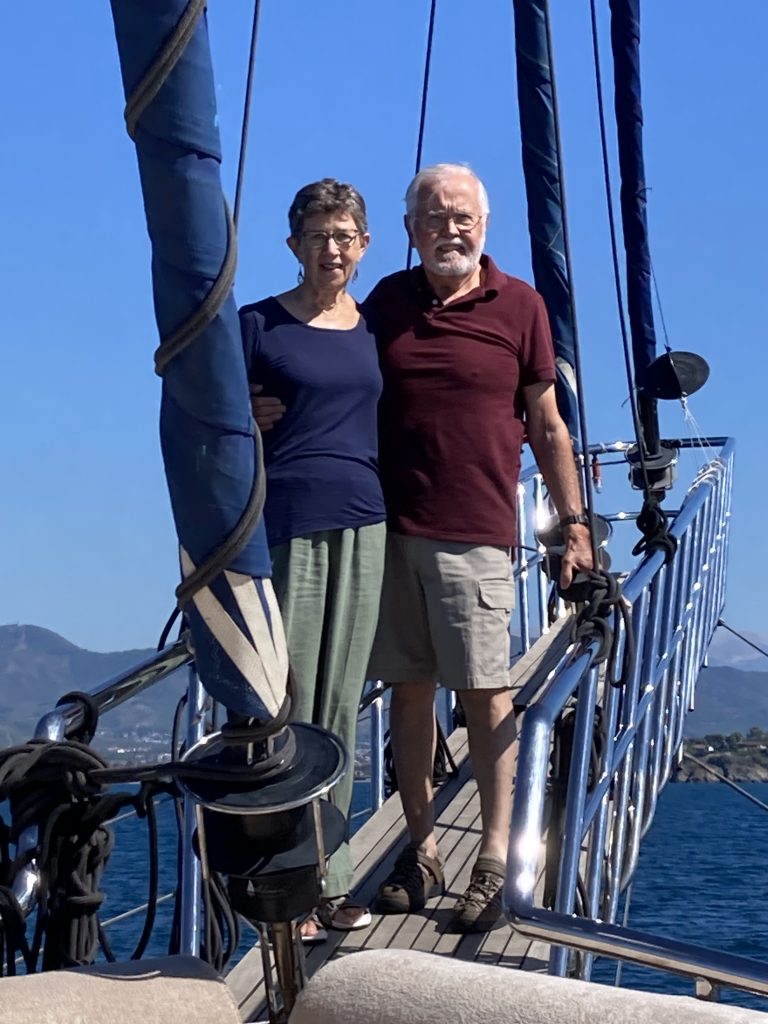
With these instructions, we embarked on a ten-day trip “On the Face of the Deep.” The Mediterranean Sea was our “deep,” and our stops were on Greek islands and in Turkish coastal cities. This trip has been brewing for us since 2020 when our first plan was one of the many events canceled due to Covid. Finally, in 2025 we joined the last trip led by Linford and Janet Stutzman.
Thursday, October 2
Wayne and I prefaced the tour with almost two days in Istanbul. There we visited predictable sites—the Blue Mosque, Hagia Sophia, and a spice market. Having thought about these mosques through the mist of romantic imagination, I noted that the reality was not as pristine as I pictured. I wrote in my journal, “both [mosques were] overrun with tourists, and both [were] shabbier than I expected, but I could imagine their former splendor. The history that surrounds them is convoluted—filled with power struggles, violence, destruction, and pride—the opposite of what any houses of worship should be founded on.” And yet, spread over the vast canvas of their huge walls and domed ceilings, there was more than enough beauty to entrance me for a longer time than I had.
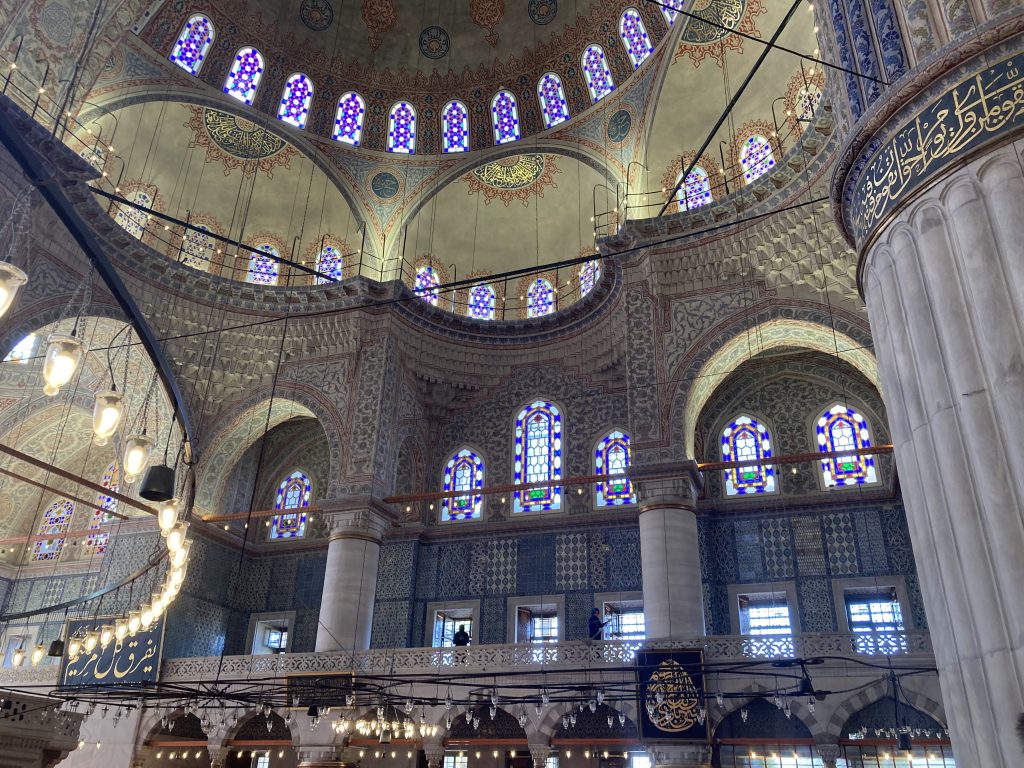
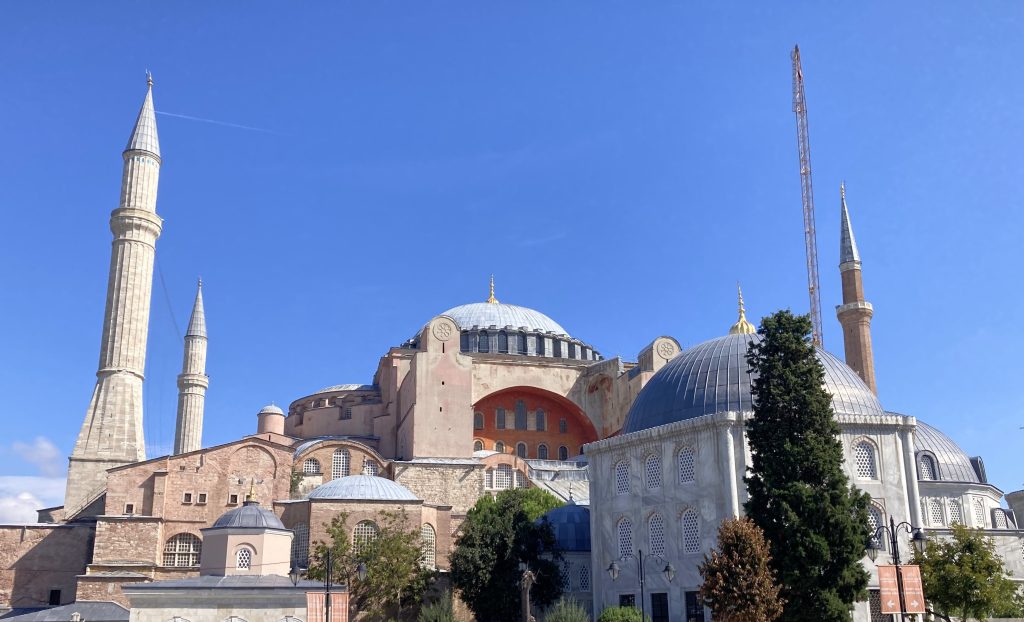
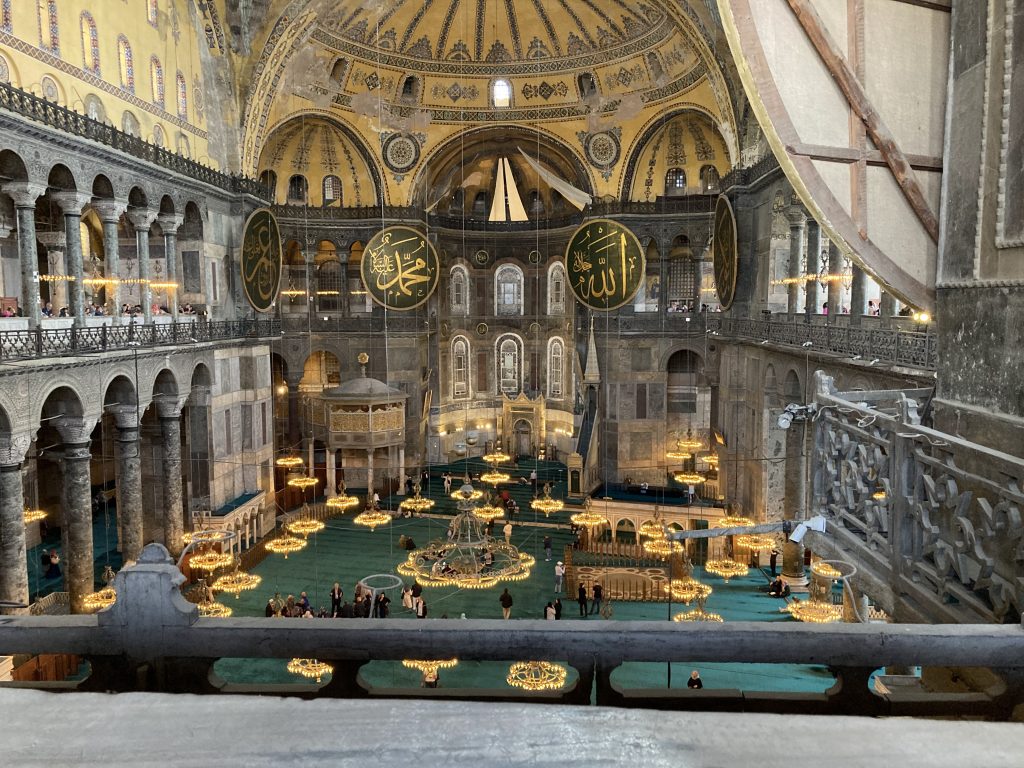
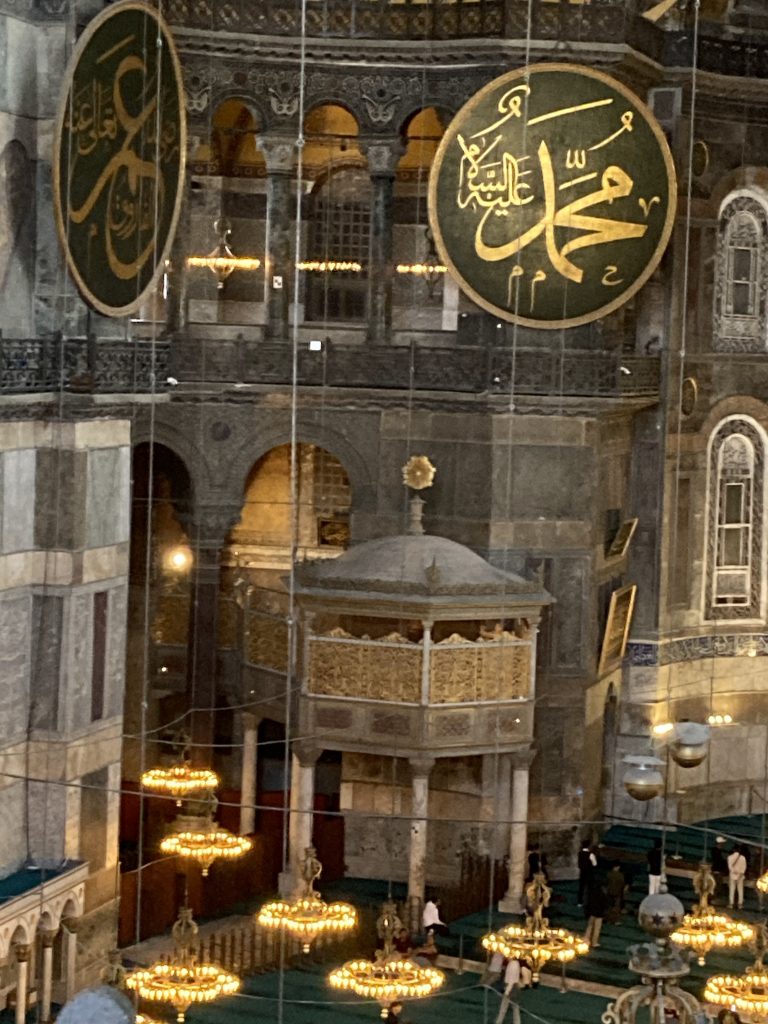
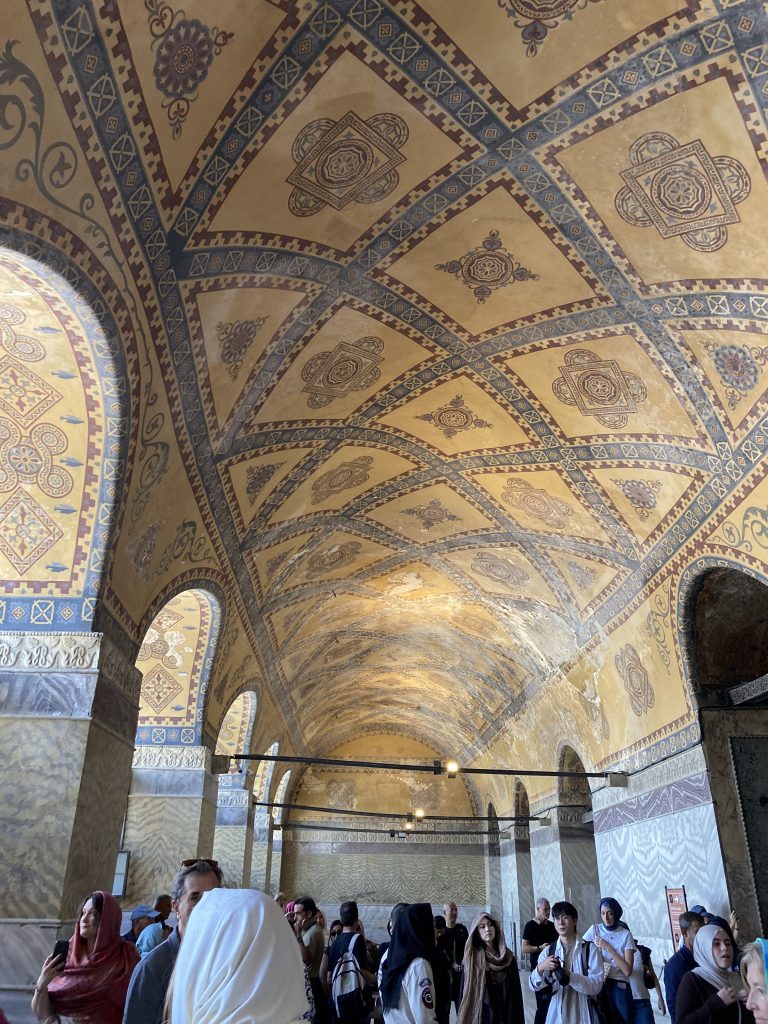
In contrast, the spice market offered closeup, breathtakingly vivid color and tantalizing aromas. I wanted to get some of everything, and each shopkeeper was more than willing to comply. I felt drawn back into the dilemma I had experienced years ago in Jerusalem and would experience throughout this trip. To pause even a moment to look at something or to glance at the shopkeeper, was to invite him (the only pronoun that applies) to entice me into his shop for his “unique” specialties, that to my untrained eye looked just like the mounds of spices in his neighbors’ shops. I came away with the oregano my cousin requested and chocolate, neither of them colorful, but hopefully flavorful.
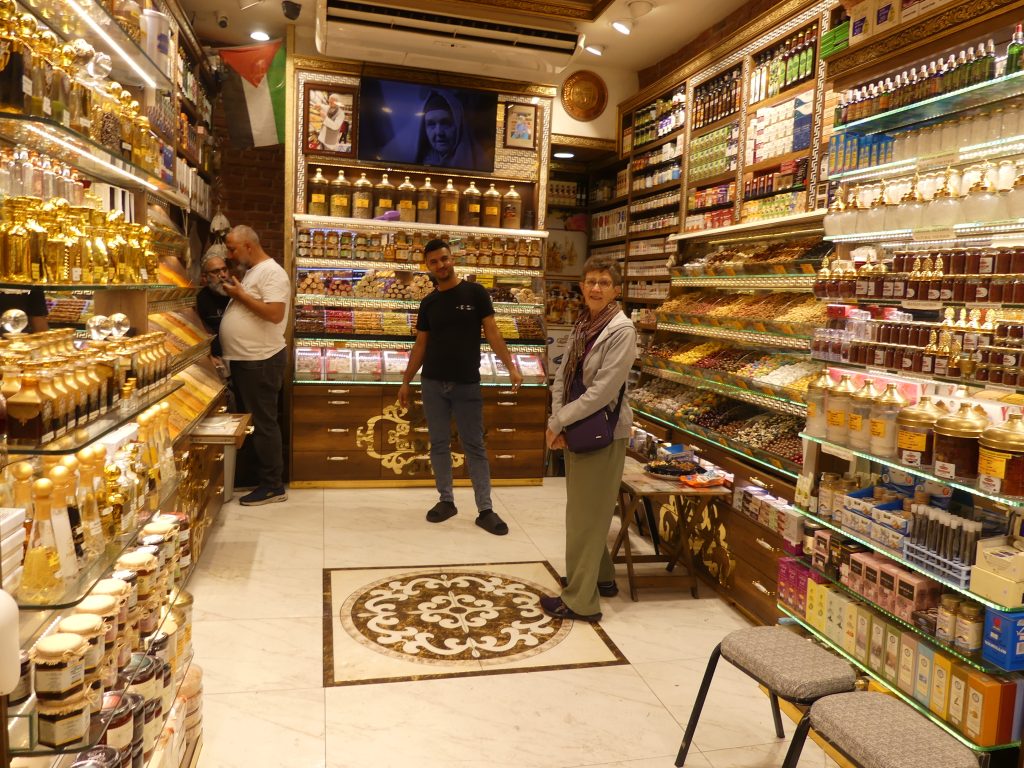
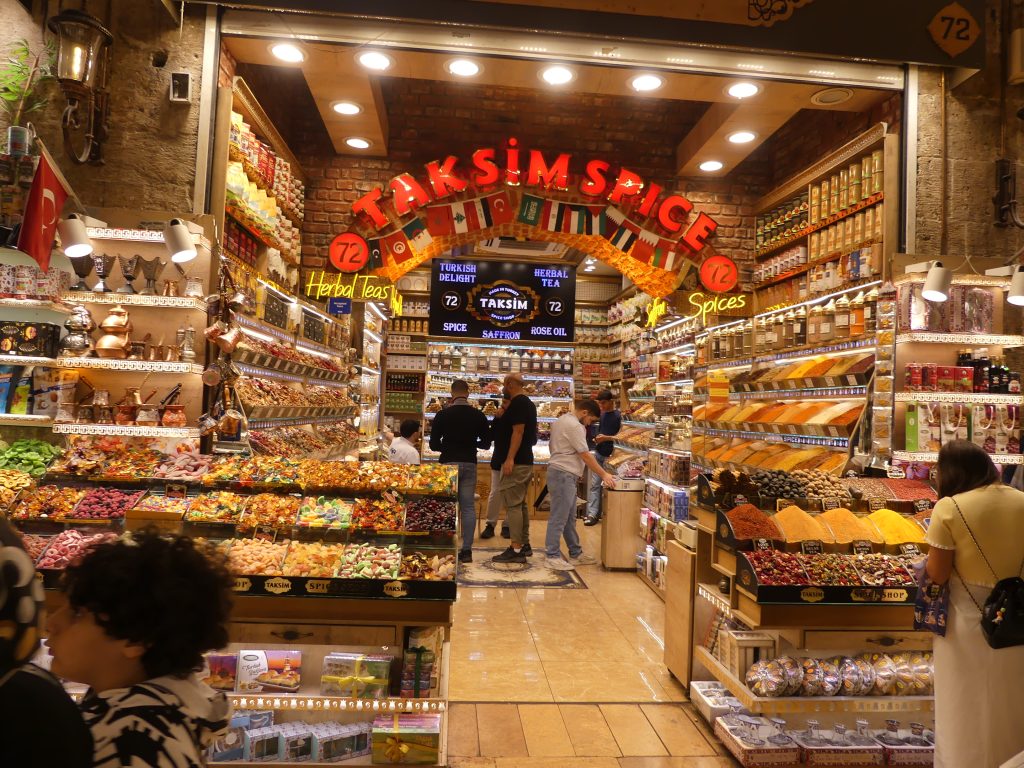
Friday, October 3
From Istanbul we flew to Izmir where our official tour began. That evening we attended a program in the Anglican Church, given by Cantore, a men’s singing group from Harrisonburg. They had been invited to accompany our tour to sing a series of sea shanties that Linford Stutzman had written, related to places we visited. To be more specific, Linford wrote the words and Cantore members the music. Being in an Anglican church in Turkey, gave me a puzzling sense of deja vu—stepping into a colony of a third culture, perhaps like me as an American attending a British Congregational church in Botswana. I could detect the sense of solidarity in being Anglican in a Muslim Turkish context, but was on the outside, invited in for an evening. Disoriented may be a word to describe my feeling.
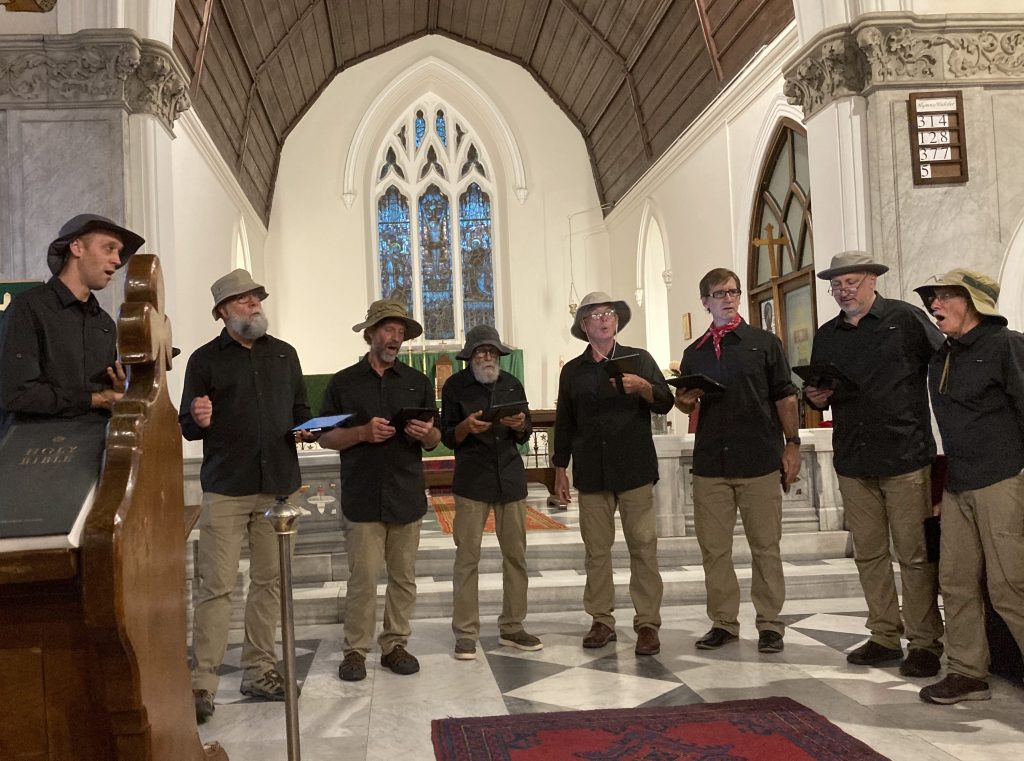
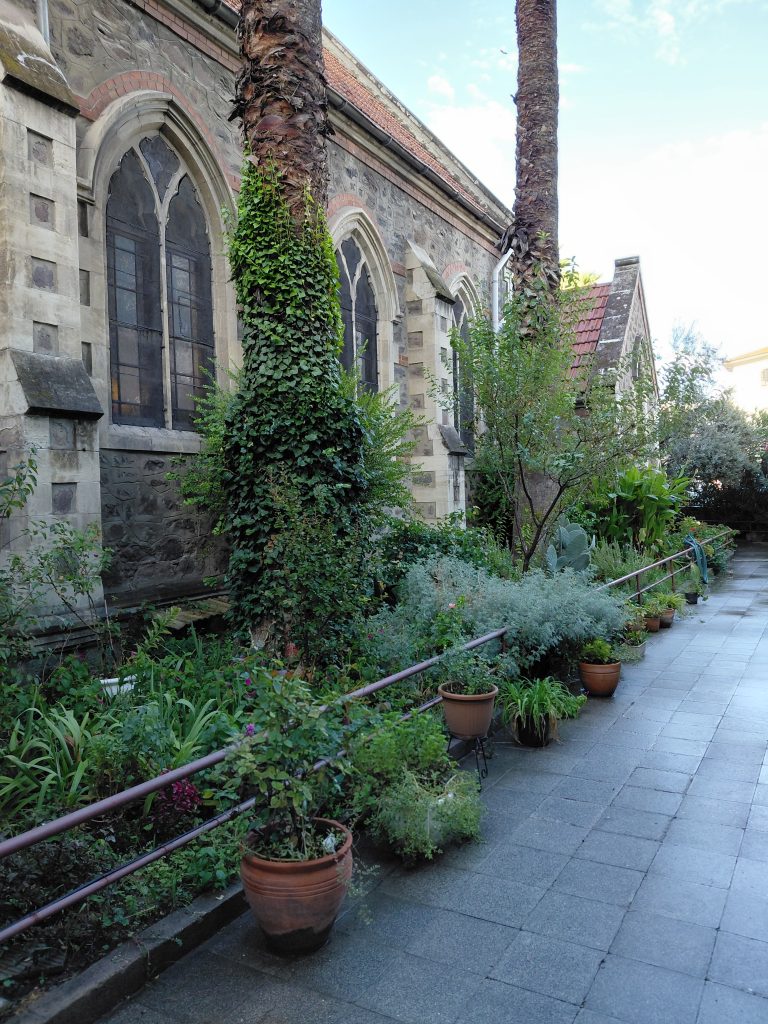
Saturday October 4
We set out by bus to Kusadasi to visit the nearby ruins of ancient Ephesus, a city of 250,000 in the first century, the leading city in its area, second in size to Rome. The Apostle Paul visited there briefly and later lived there for three and a half years.
Today Ephesus boasts some of the most “spectacular ruins” of the ancient world, meaning that there is more above ground than in many other ruined cities. A significant part of the entry to what must have been an imposing library still stands and much of the theater that could hold 25,000 people. The ancient agora or market place is visible only by foundation stones, but we could at least imagine the area full of shops, among them possibly the one where Paul worked with Aquila and Priscilla at tent and sail-making.
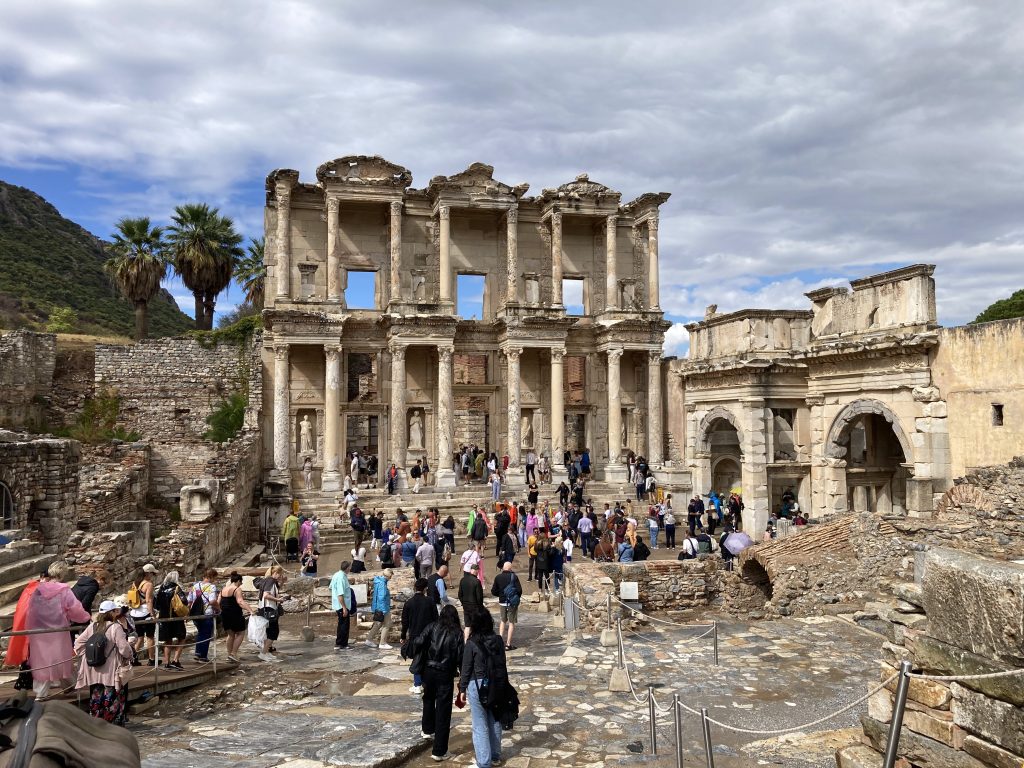

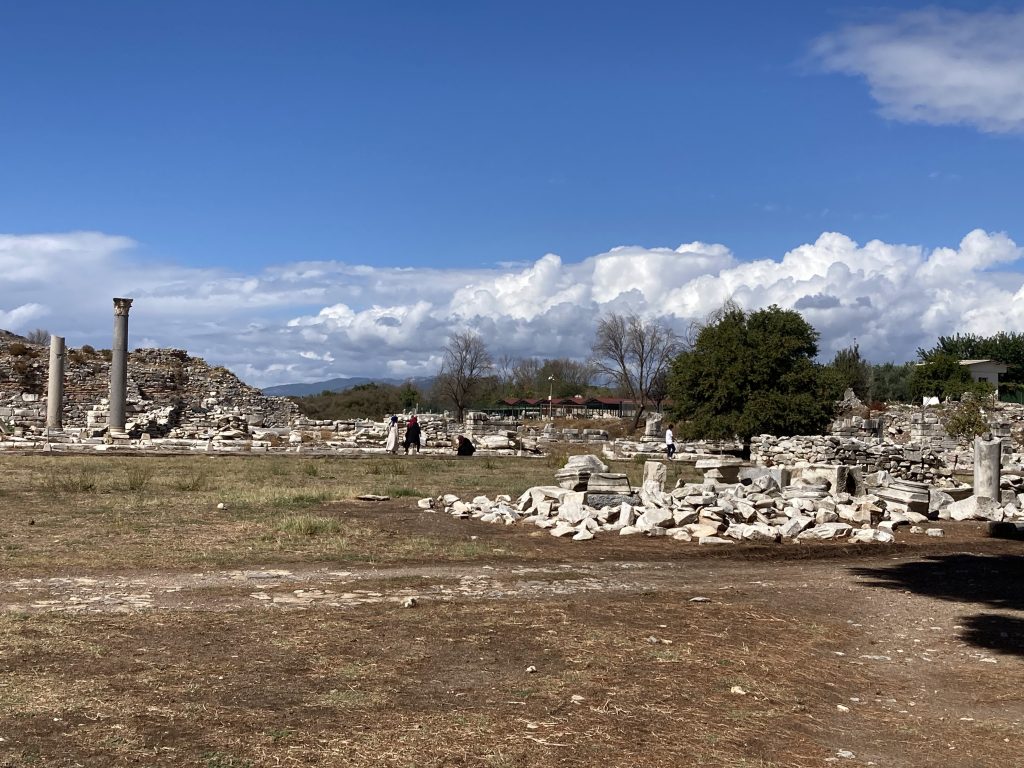
Also located in Ephesus, was a temple to Artemis or Diana, considered one of the seven wonders of the ancient world. Now only fragments have been collected and used to reconstruct one column. Sic transit gloria mundi!
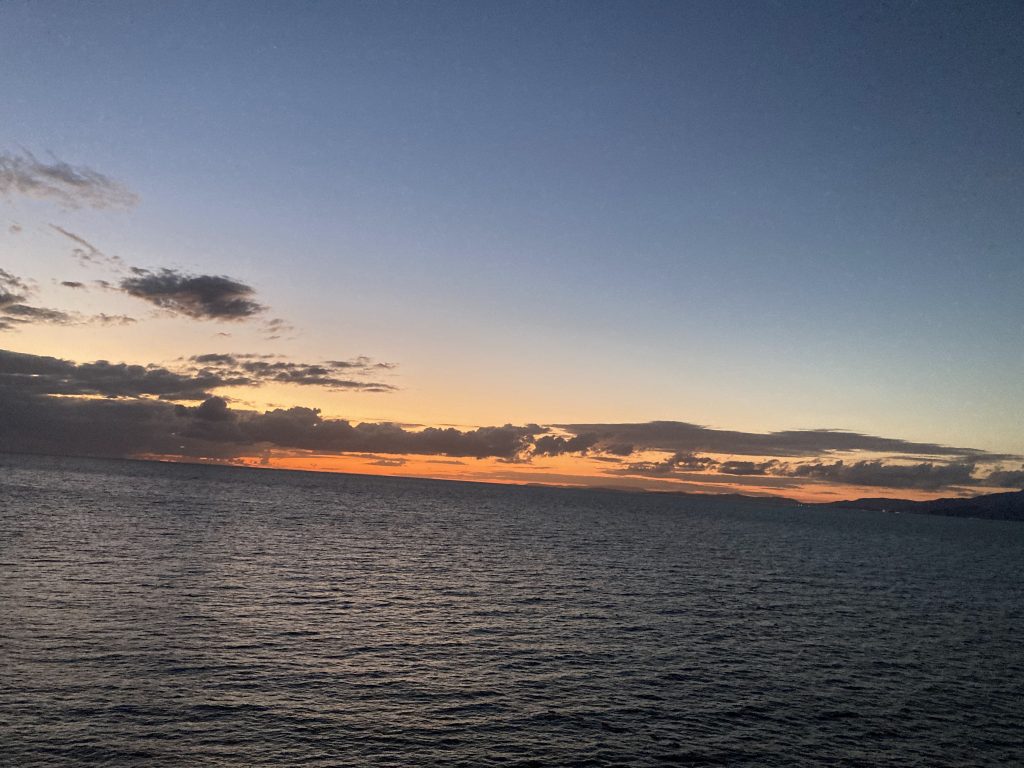
Sunday, October 5
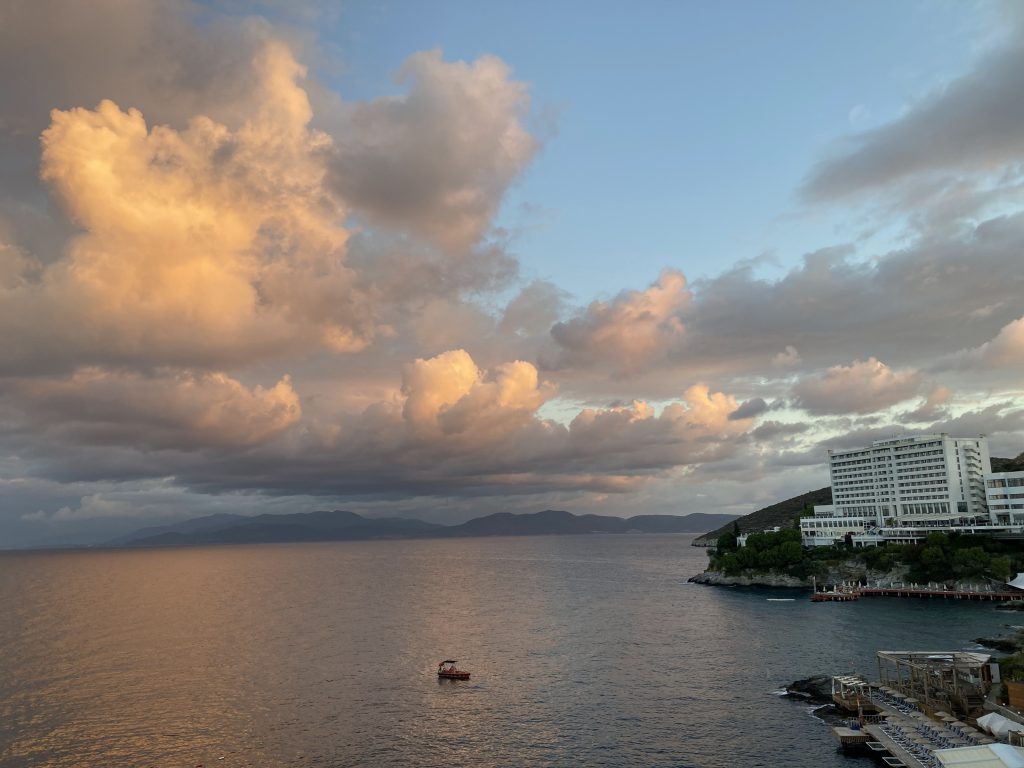
We encountered the deep—going through the Turkish border exit and then embarking on our gulets to sail to the Greek island of Samos. (Our group of 60 sailed on two small sail boats called gulets, each accommodating about 30 passengers.) At Samos we went through customs and returned to our boat for lunch.
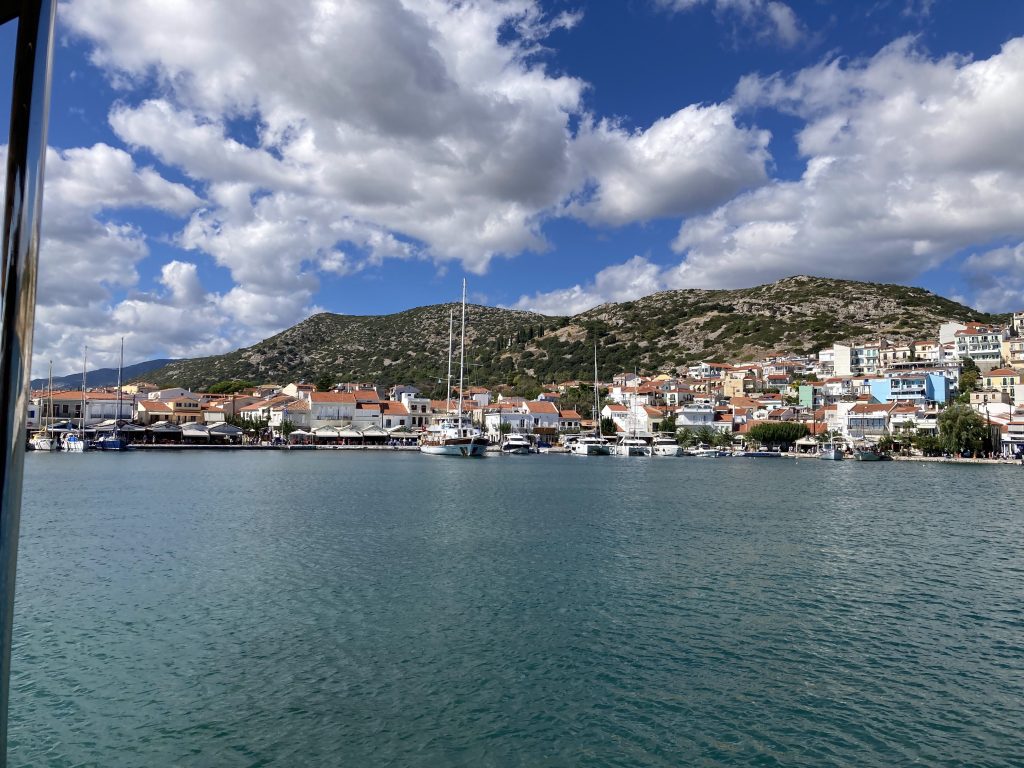
We then boarded buses for Heraion, the temple dedicated to Hera, the goddess of marriage, women and family, and the protector of women in childbirth. The temple was built around 500 B.C. and in its complete form was twice the size of the Acropolis in Athens. It is now a UNESCO World Heritage Site and one of the most important places of the ancient Greek world. However, what we encountered looked like a field of stones—not ordinary ones, but stones clearly cut for pillars, walls, and decorative pieces. Because it was built completely of marble, much of the building materials have been “repurposed” over time—not vandalized, but recycled. In addition, the area is earthquake prone, leading to natural destruction.
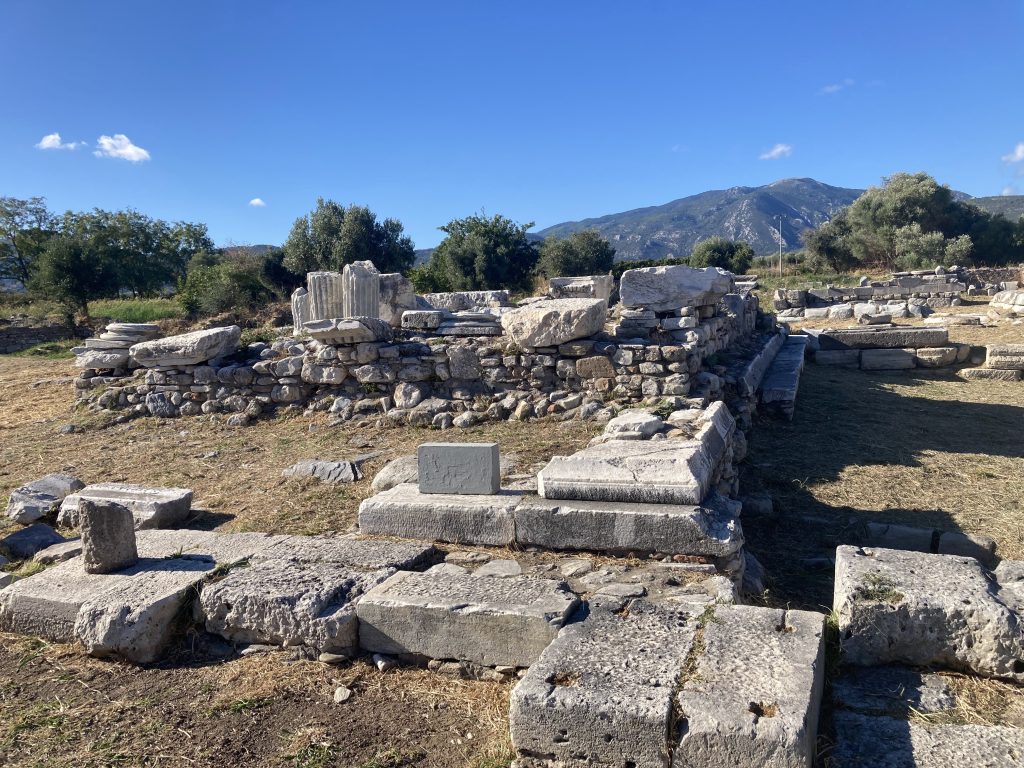
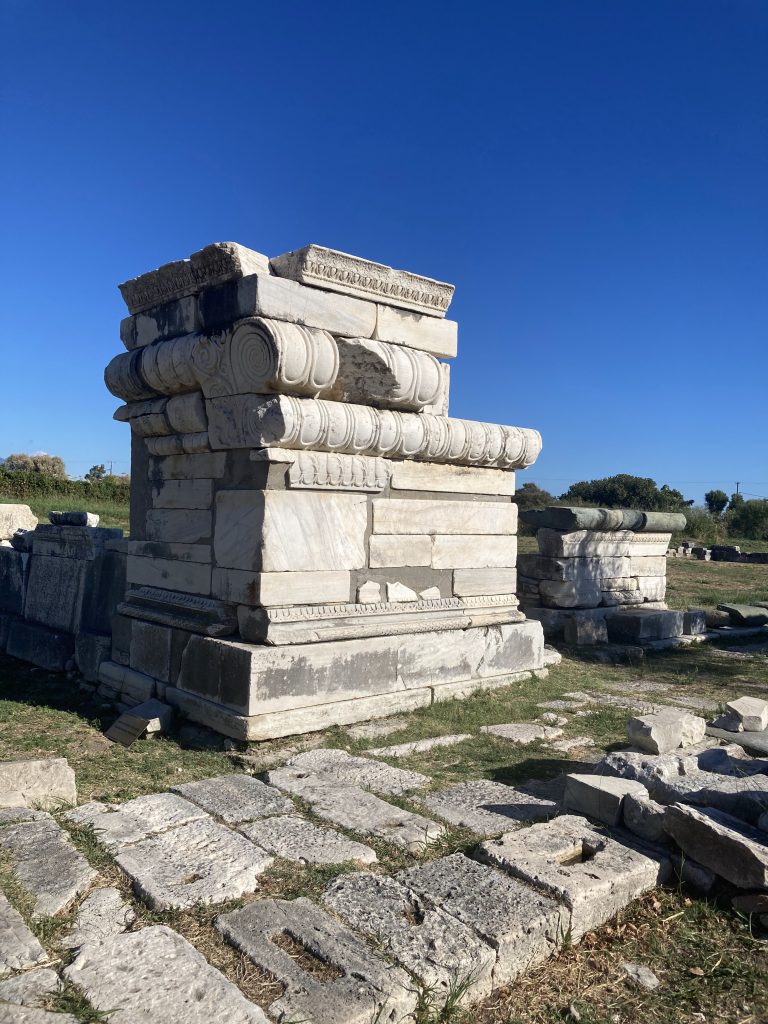
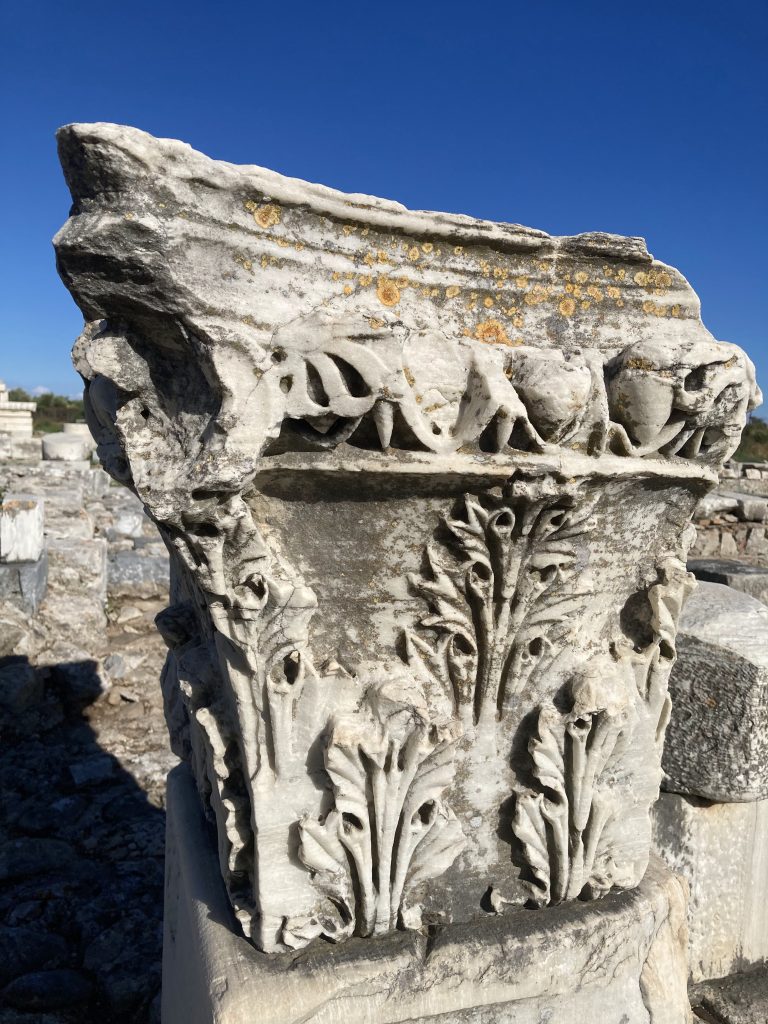
The sunny, warm afternoon made for enjoyable wandering. As I turned in a circle, I noted that mountains encircled the space on three sides, like embracing arms, with blue sea filling in the rest of the circle. The Heraion was built in an originally isolated space with the city of Pythagorio beyond its nearest mountain. It remains a quiet sanctuary where I would have loved to sit in quiet for a long time. But tours are not calibrated to individual preferences, so I had to leave behind the tranquility that has existed there for ages.
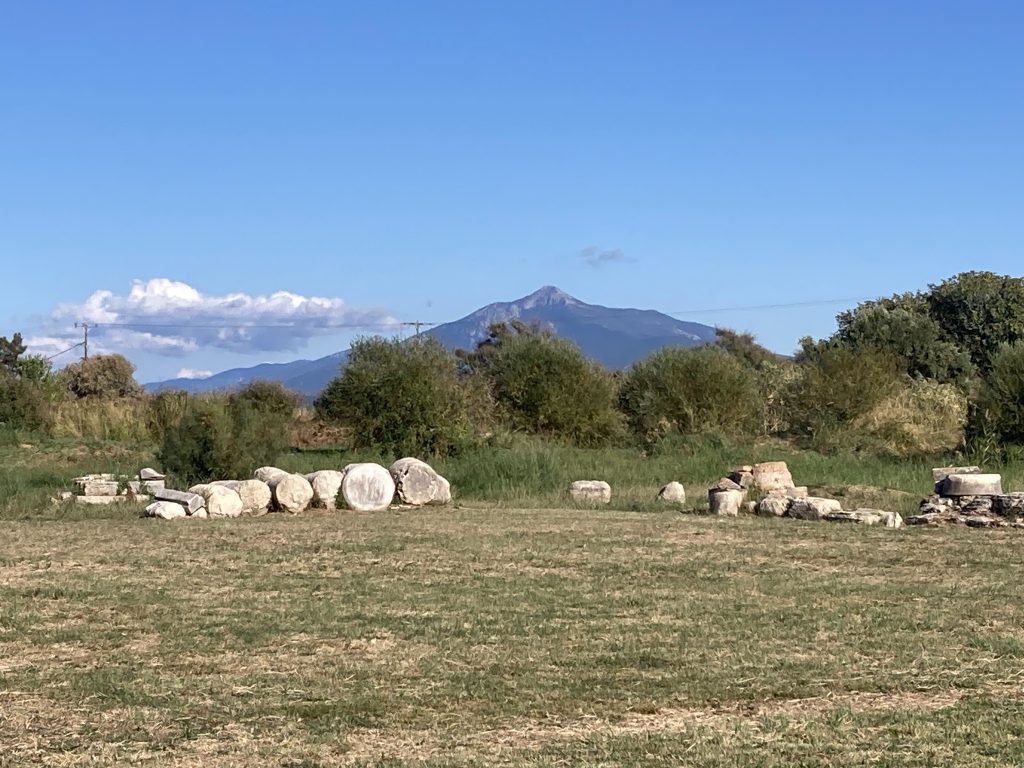
On the way back to our gulet, we stopped at the Monastery of Megali Panagia. Begun in the 16th century, it is now maintained by its two remaining monks, along with help from the surrounding village. The small chapel filled with its Byzantine art would have taken more time than we had to explore in anything like completeness. There Cantore sang for those of us who could get close enough to listen. (Ubi Caritas – St. Mary monastery – YouTube)
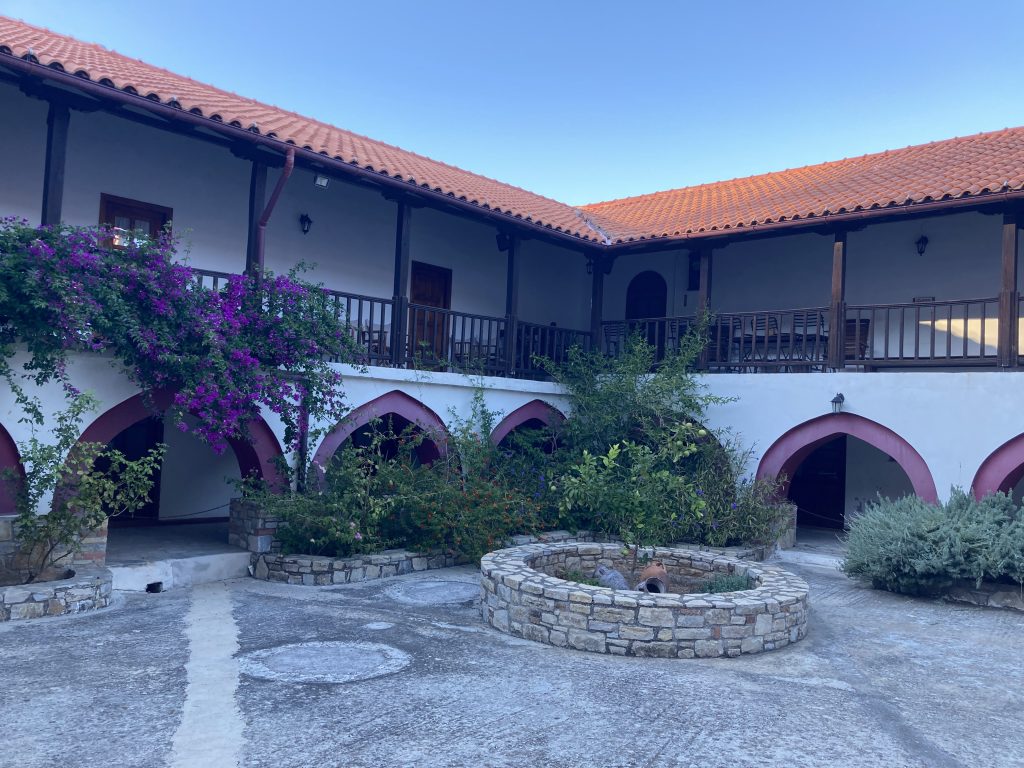
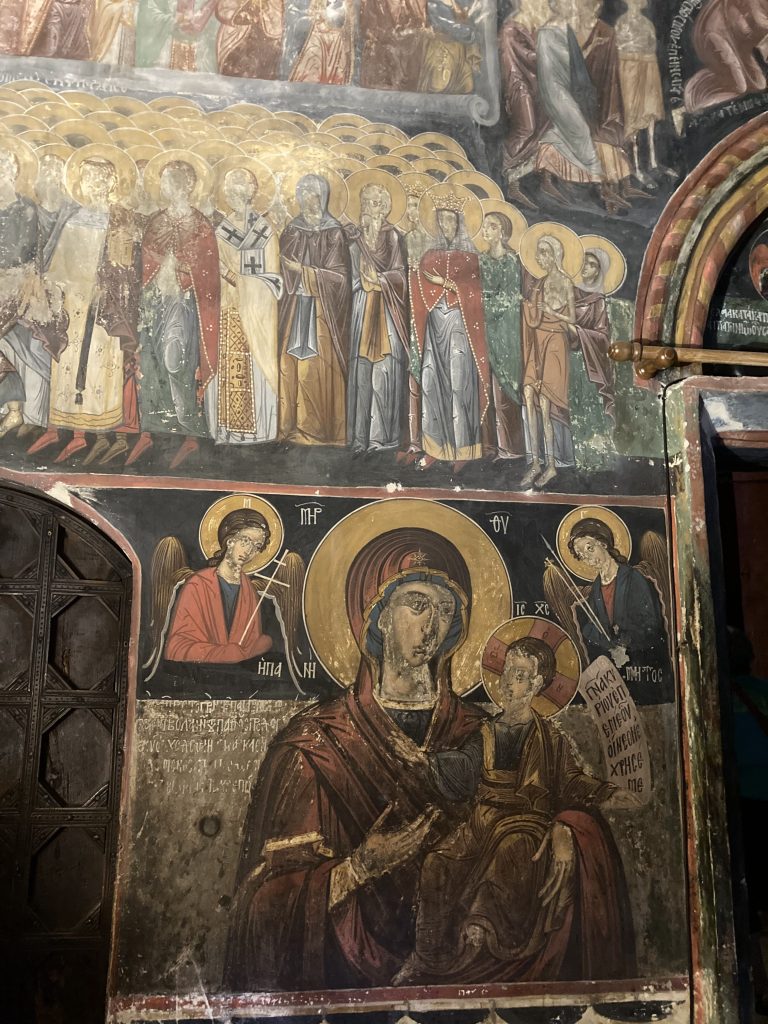
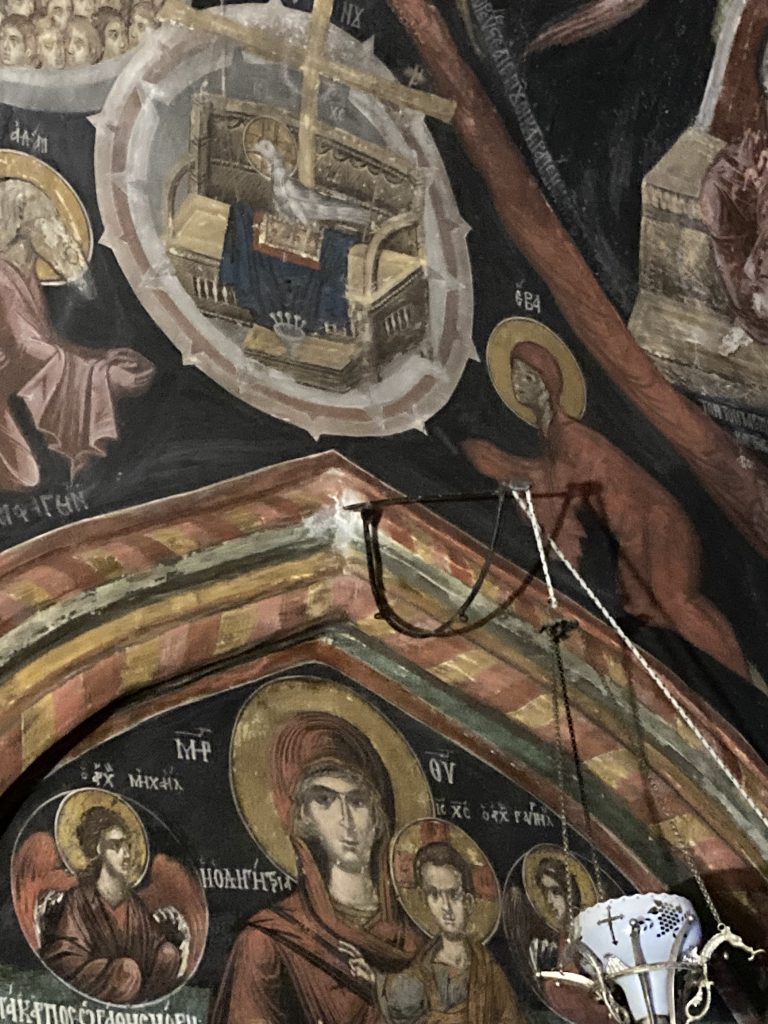
We returned to Pythagorio Port, where our gulets were anchored, named after—you guessed it—Pythagoras, Samos’ favorite son. We learned that Pythagoras was a philosopher, active in the world of knowledge well beyond a2 + b2 = c2 that I learned in geometry class. Linford told us briefly about his theory of the stars and planets and his idea of the “music of the spheres.” All the while, the almost full moon played games with his memorial statue.

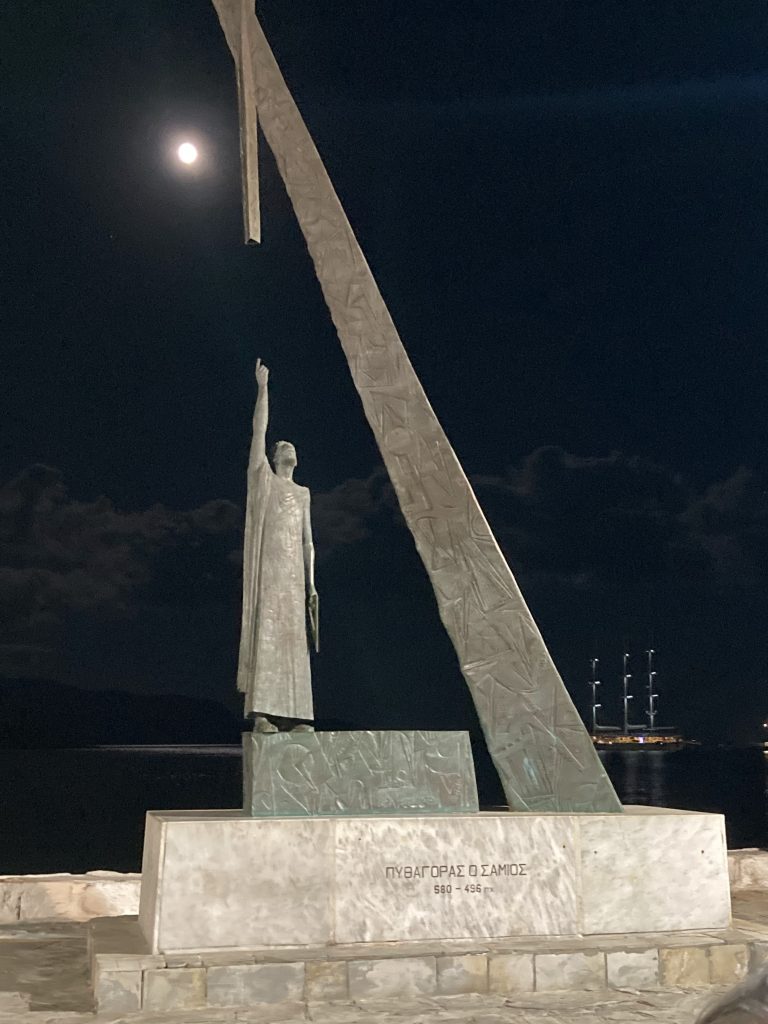
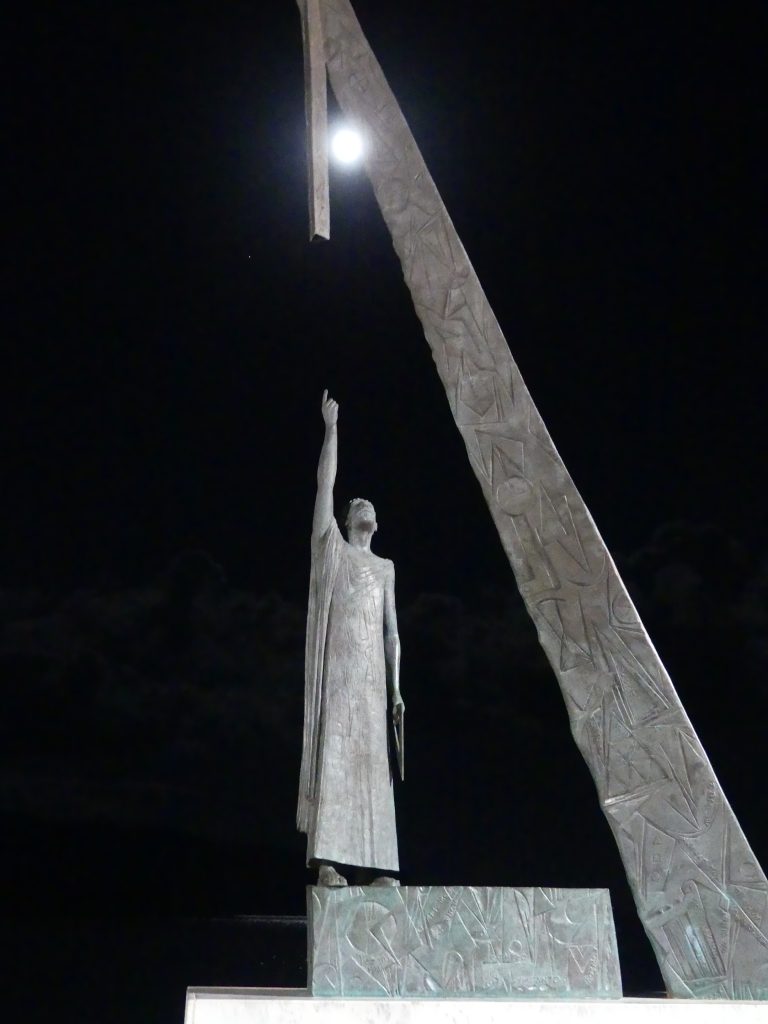
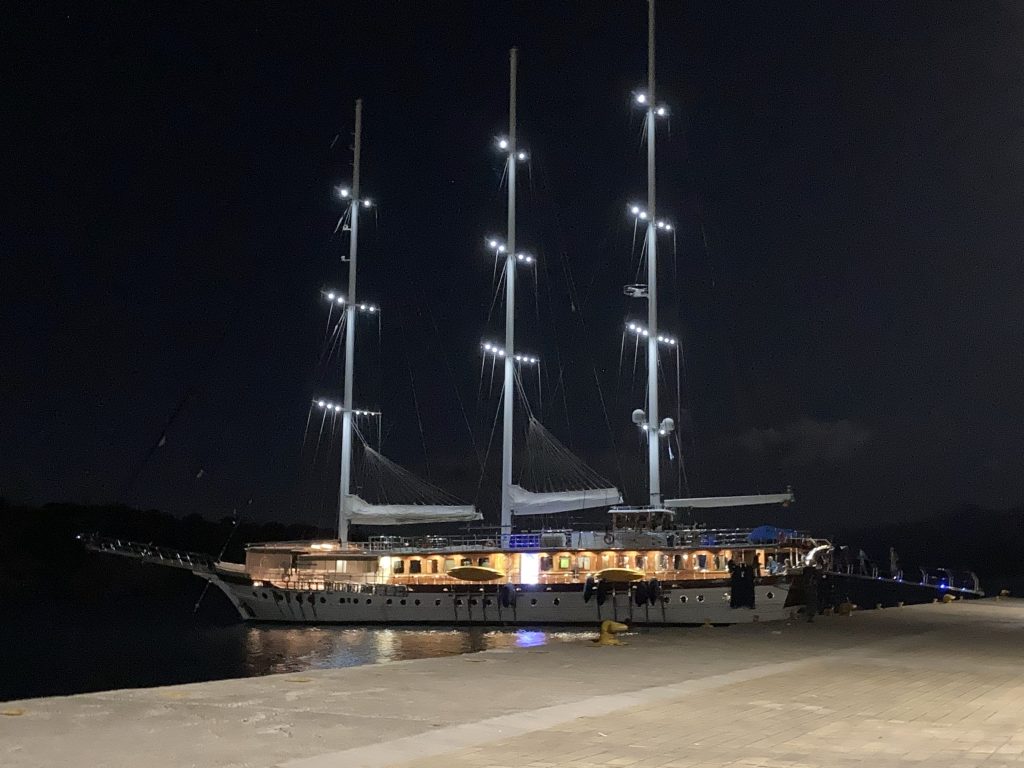
Monday, October 6
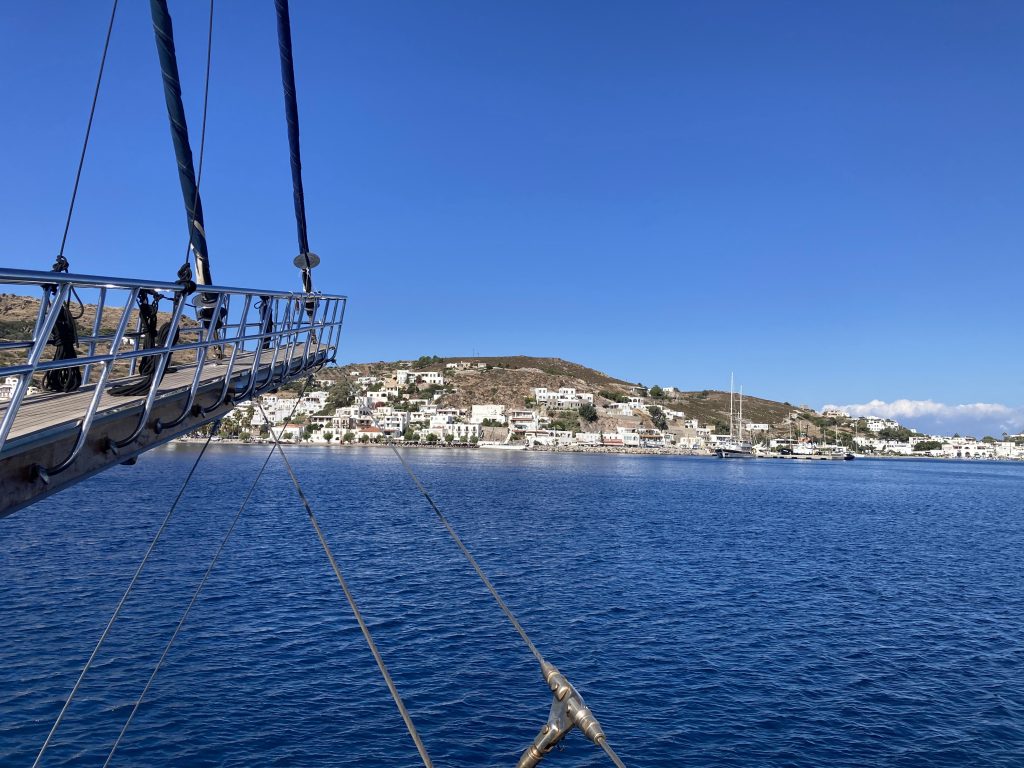
We sailed on the deep blue sea to Patmos, the island where John was exiled and where he wrote the book of Revelation. Buses took us up the mountain to the cave where John supposedly went to pray and where he received his revelation. The space was too small to hold us all, so we moved through in small groups (no pictures–the logistics weren’t conducive). While I am always skeptical of the exactness of such sites, I found it fascinating to imagine John actually being there, of such rich imagery coming in a stark, secluded space. There would have been no candles to light, nor any gold embossed paintings—just hard rocks and the sea that separated him from the rest of the world.
We then went to the Monastery of St. John the Theologian, an 11th century monastery also high on the mountain, where we looked down over the town of white buildings to the blue, blue sea.
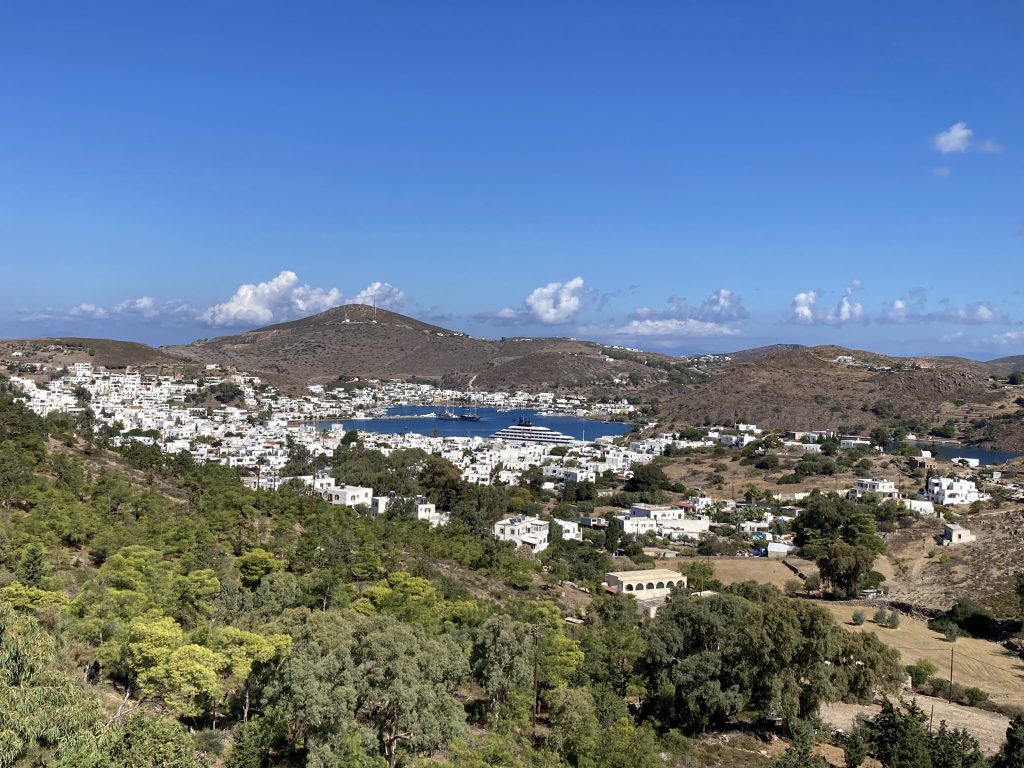
That evening everyone crowded onto the deck of our gulet, and Cantore sang several songs and then Jeremy Nafziger led us in singing some of the 40 songs that he had compiled, mostly hymns and gospel songs that in some way refer to the sea or water. We were reluctant to stop.
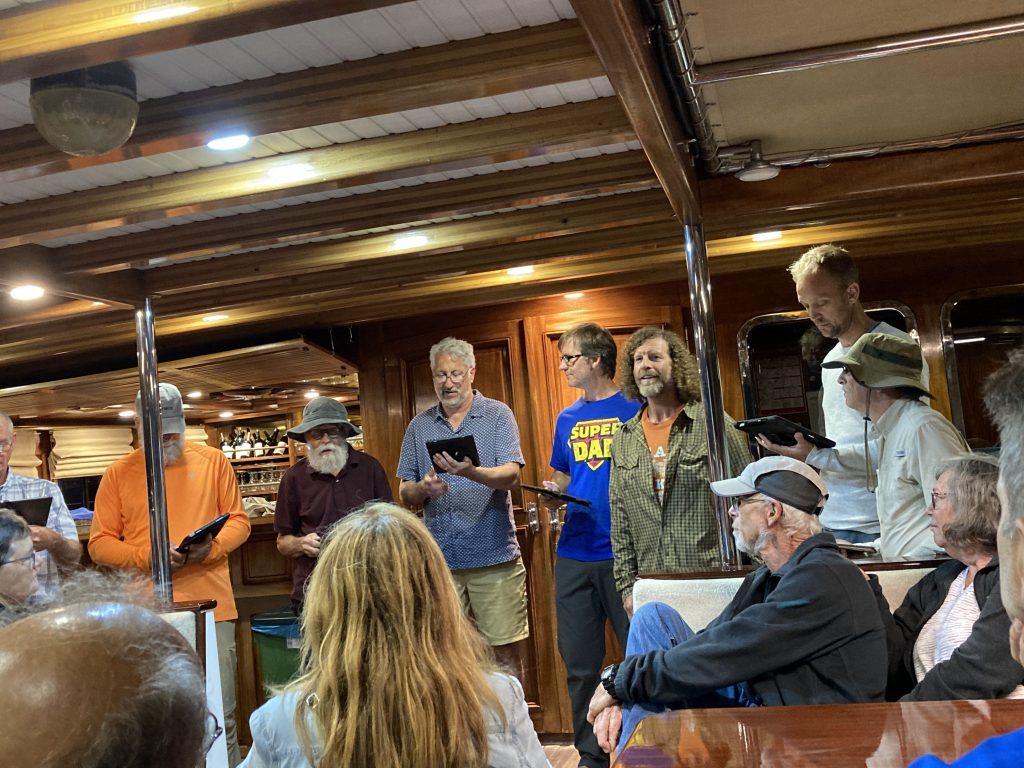
Tuesday, October 7
Our day at sea. Leaving Patmos I wrote, “somewhat cloudy but bright, rolling gently on the water. It’s easy to imagine the island as mountain peaks rising above the water . . . the main colors—blue of water, lighter blue of sky, white of clouds and houses, occasional red clay tile roofs, greens from drab to deep, tan rocks and bare earth—not an expansive palette. But in the other direction all water and sky in shades of gray.”
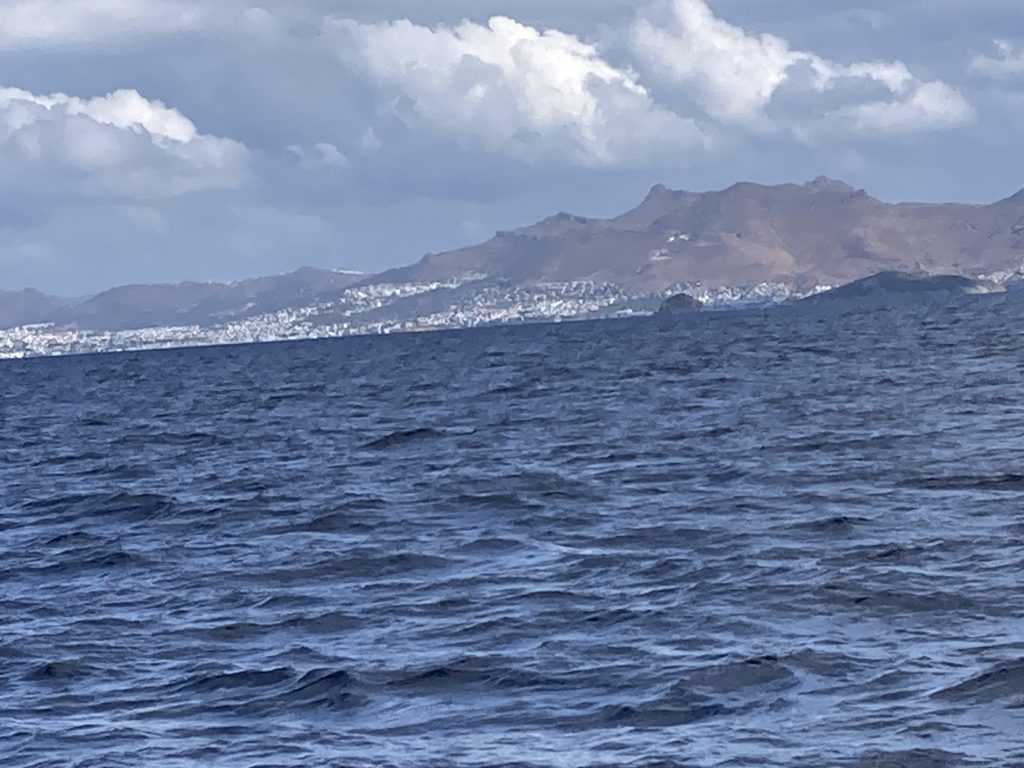
The gray sea went from gently rolling to more boisterous dipping. As I looked out, the water didn’t appear extremely rough, but it felt that way. Between my daily Dramamine and wrist magnets, I felt only vaguely queasy, but I stayed put on the lower deck where my side view went from all water to all sky and back again to all water again. We heard a tremendous crash from the kitchen which turned out to be the microwave falling from its shelf to the floor, accompanied by a few dishes and glasses. By lunch the plates stayed on the table and most of us were ready to eat.
We arrived at Kos midafternoon and made our way through the town to a statue of Hippocrates, the town’s favorite son.
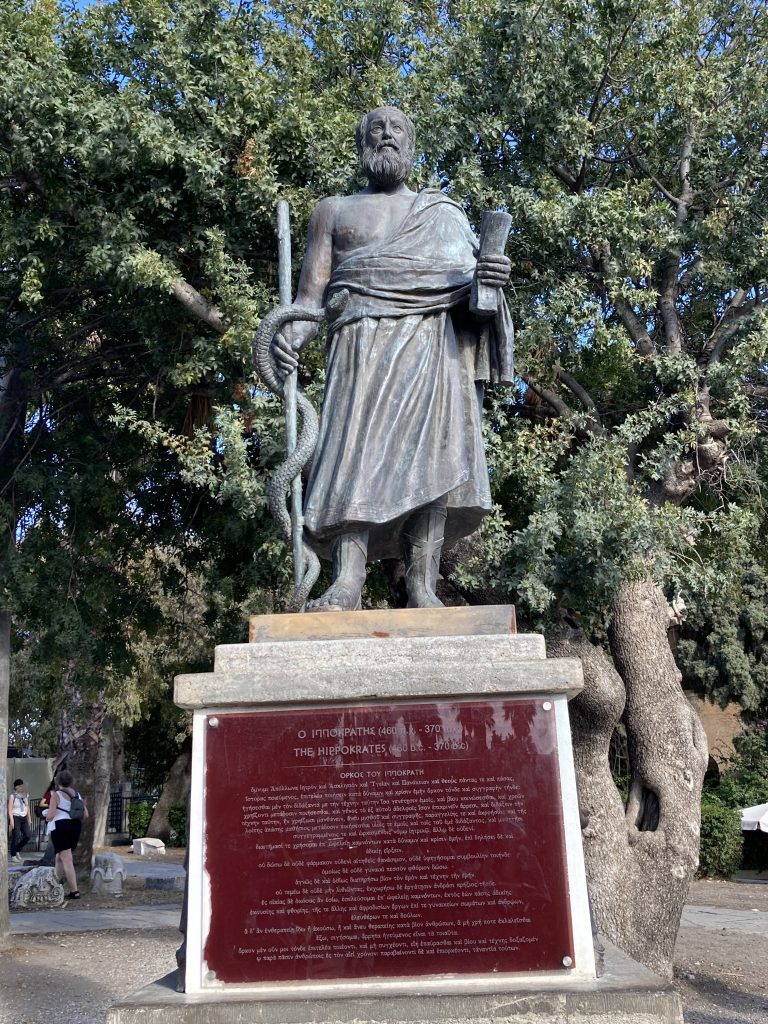

Wednesday, October 8
A showery morning. We rode by bus to the Asklepion, a combination medical school, healing center, and place of worship dedicated to Asclepius, the god of medicine. This complex, where Hippocrates founded his school of medicine, offered more wholistic resources for healing than modern medicine can boast of.

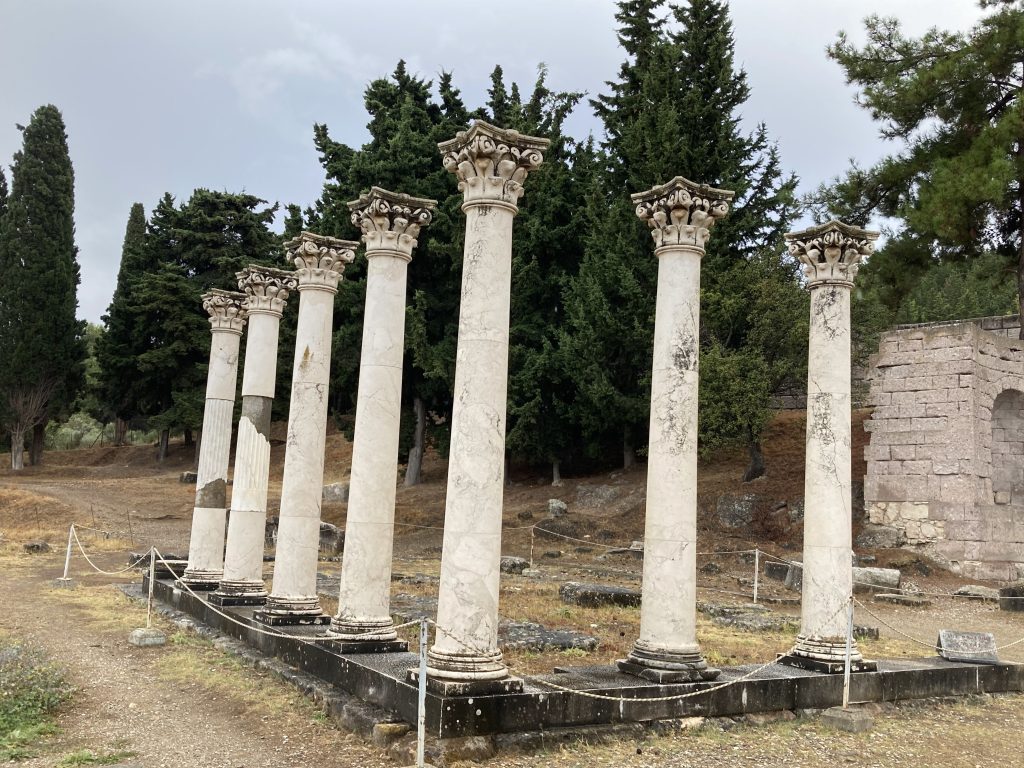
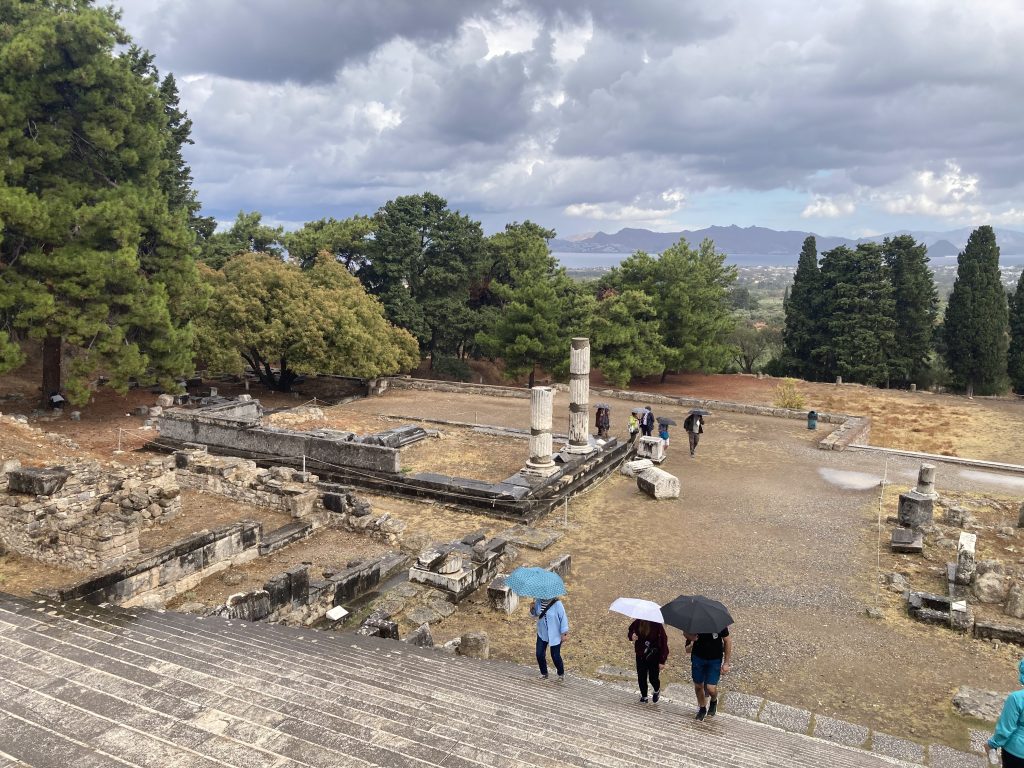
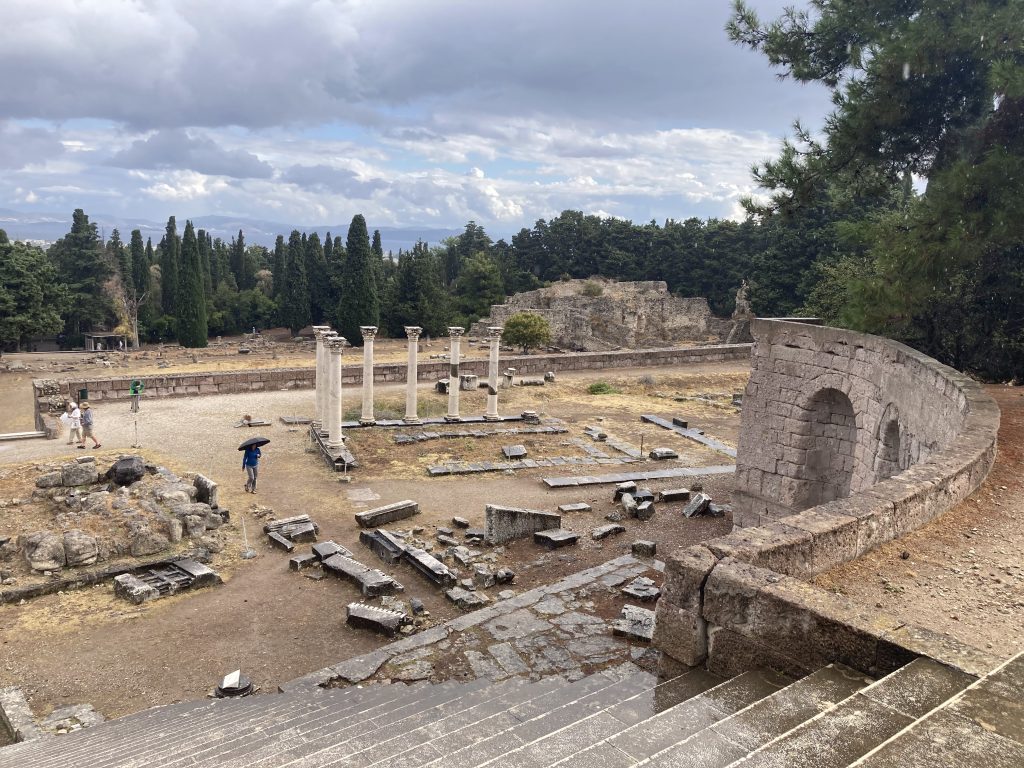
After a long afternoon of sailing, we pulled into the port of Rhodes, and suddenly we were transported from ancient Greece to a walled city built by medieval crusaders. Seeing the wall lit at night felt a little like sailing into a Disney theme park, but this was the real thing.

Thursday, October 9
The next morning, we toured the Palace of the Grand Master, which contained a mishmash of artifacts from medieval times and the 1930s when it was restored and used by the occupying Italians. A number of mosaics from other sites were installed in various floors, a meticulous, tedious project.
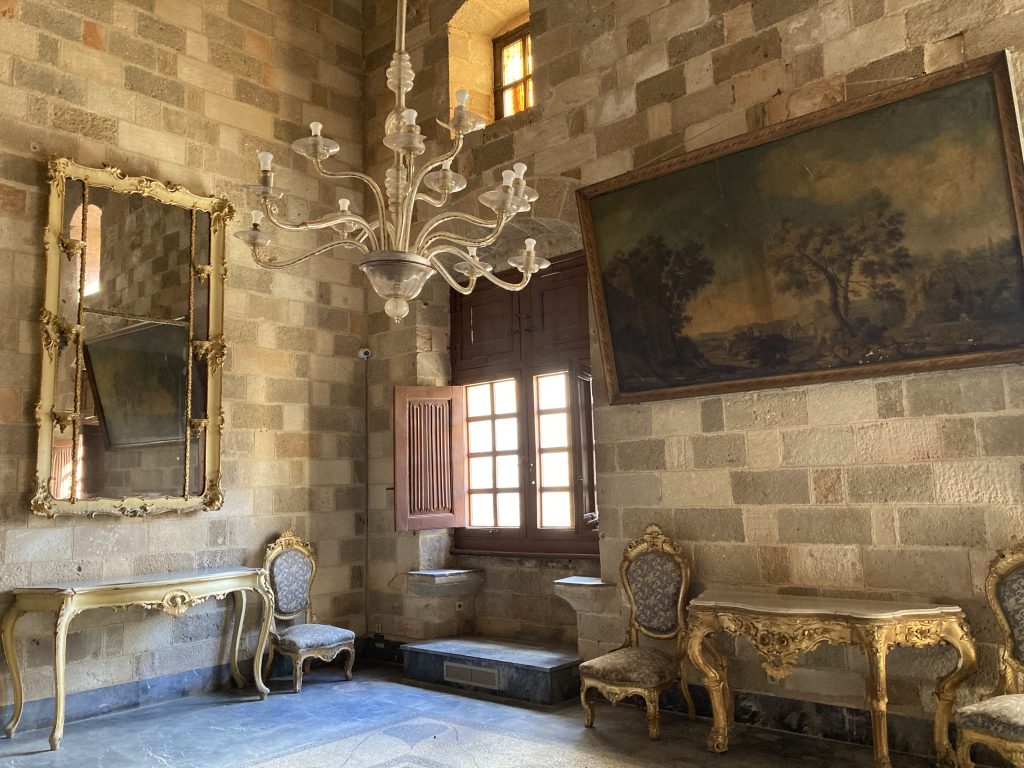
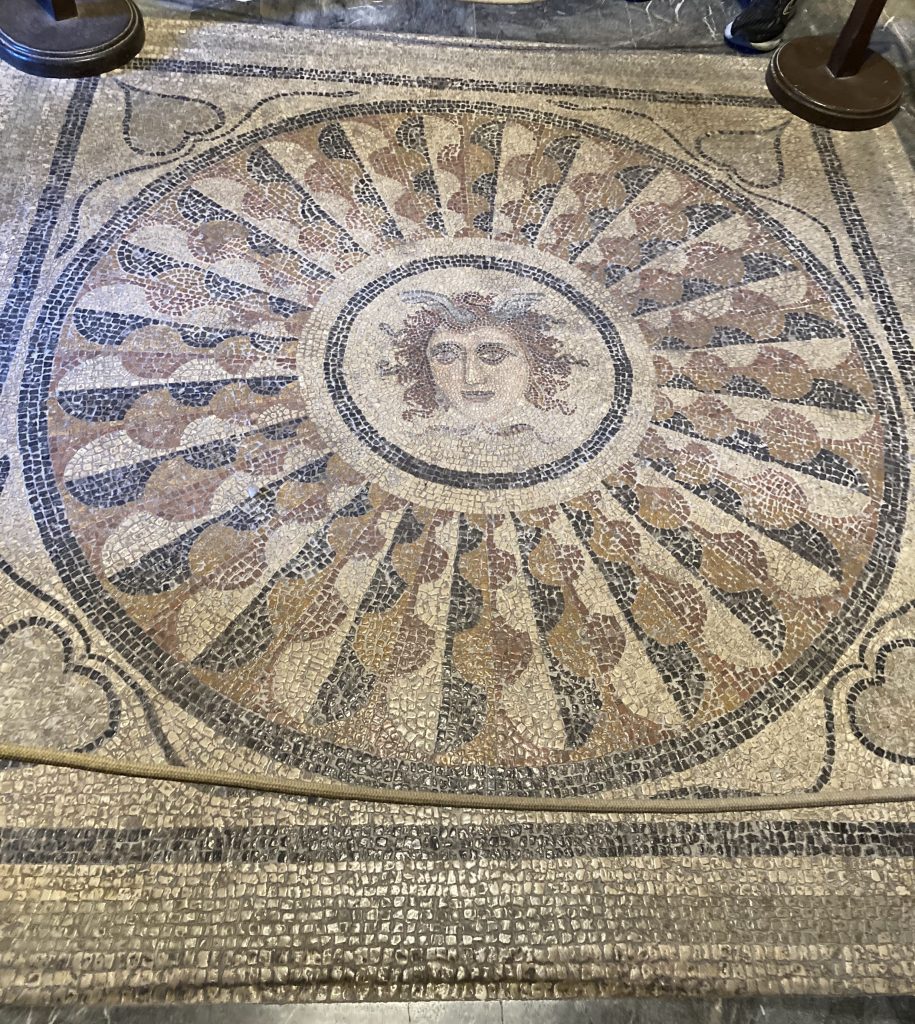

The afternoon was for shopping and exploring the city. I particularly enjoyed the quaint alleys and side streets. The shopping area was congested, full of tourists like us, wanting to find the right thing to take home.
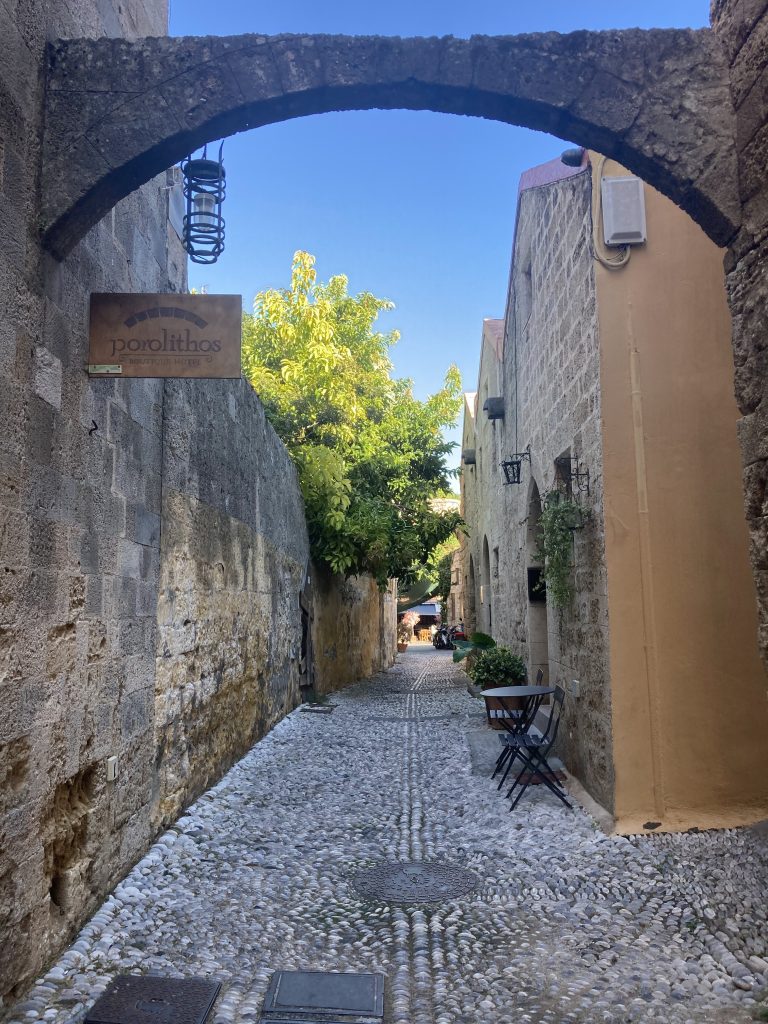
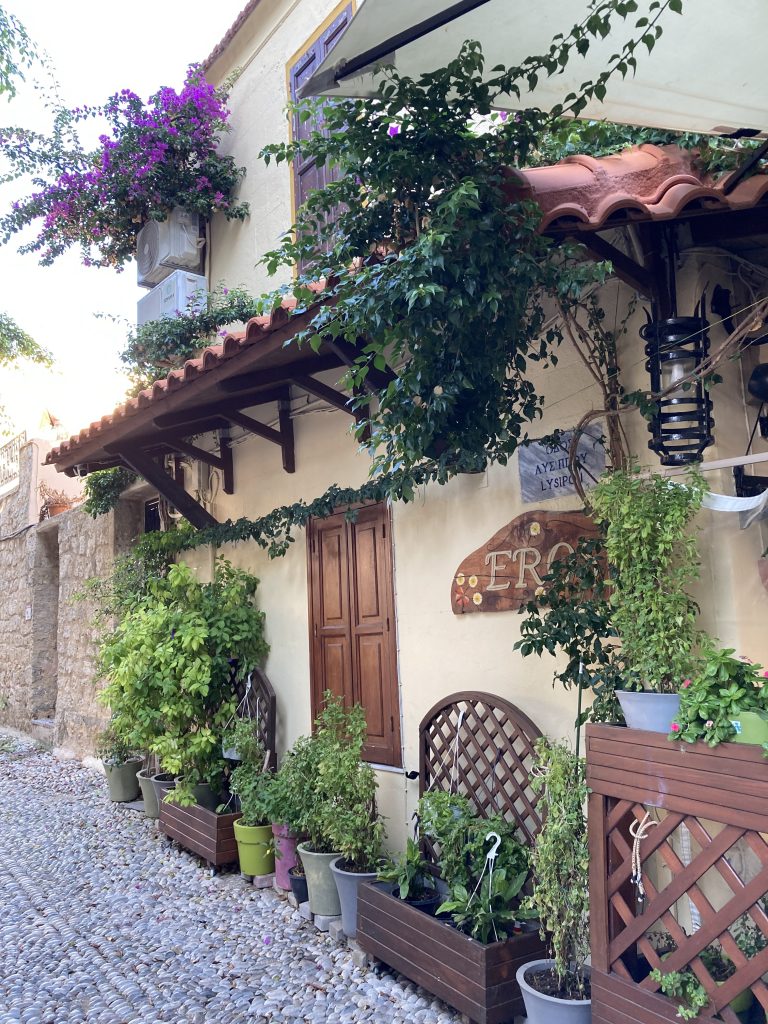
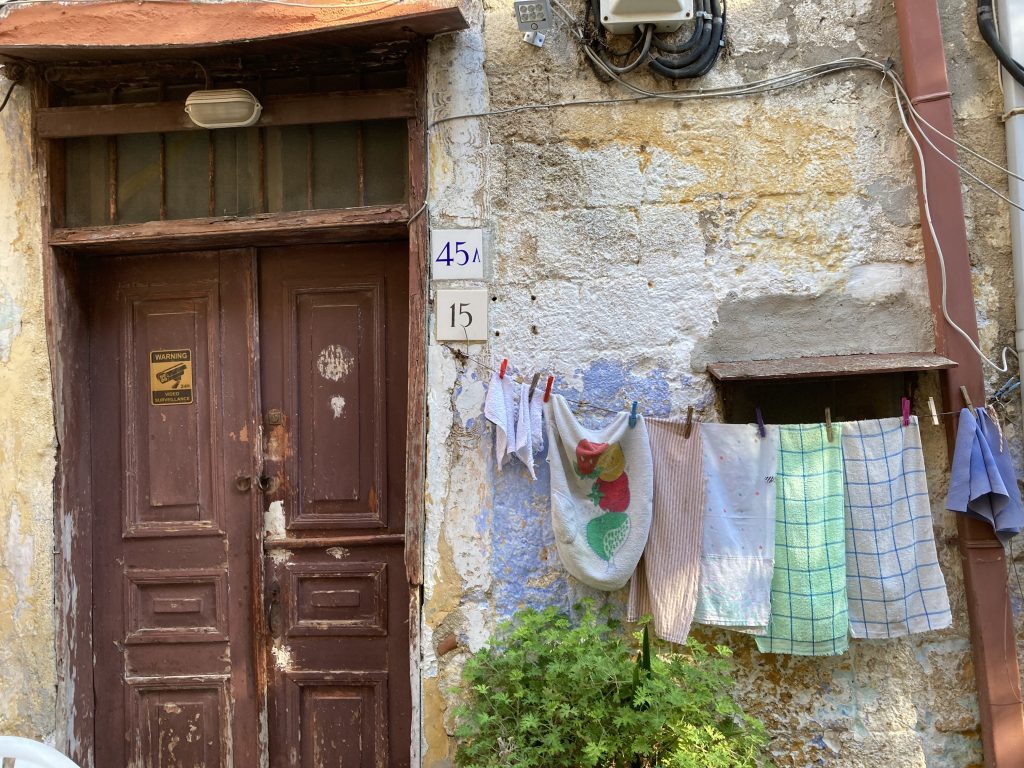
In the evening Linford took us to the Jewish synagogue. Only a handful of Jewish people live in Rhodes today. The vast majority were rounded up by the Nazis and the community has not been rebuilt. The synagogue is now used as a museum. We reflected both on the terrible past of the Jewish population, and on the current horrors in Gaza carried out by Israel, ending with a prayer.


Friday, October 10
A day at sea, on the way to Fethiye, Turkey, I wrote: I’m going to go to the upper deck to have a more panoramic view on this pristine day, not a cloud visible. Deep blue above, fading to a pinkish gray at the horizon and then deep, deep blue with a million sparkling ripples falling black on their shadow side. We’re heading toward blue mountains, mostly in a haze that covers details, leaving only outlines.
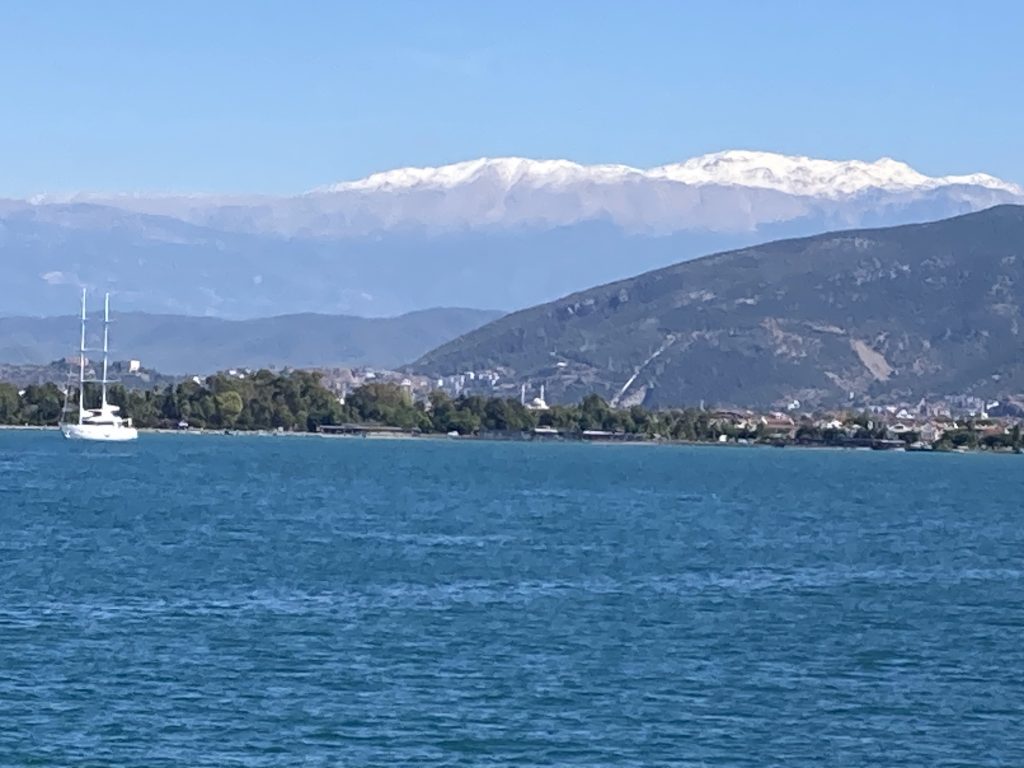
After docking we had free time, and I wandered through streets of shops. I was sad I couldn’t take fresh produce home with me. That was what appealed to me the most.
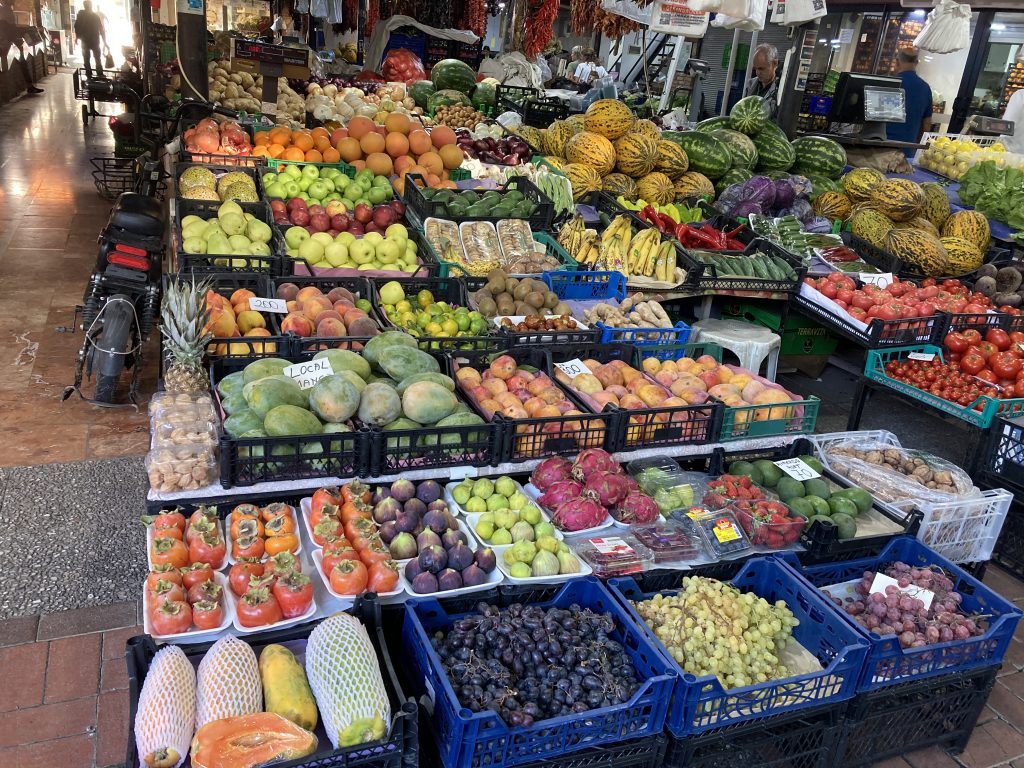
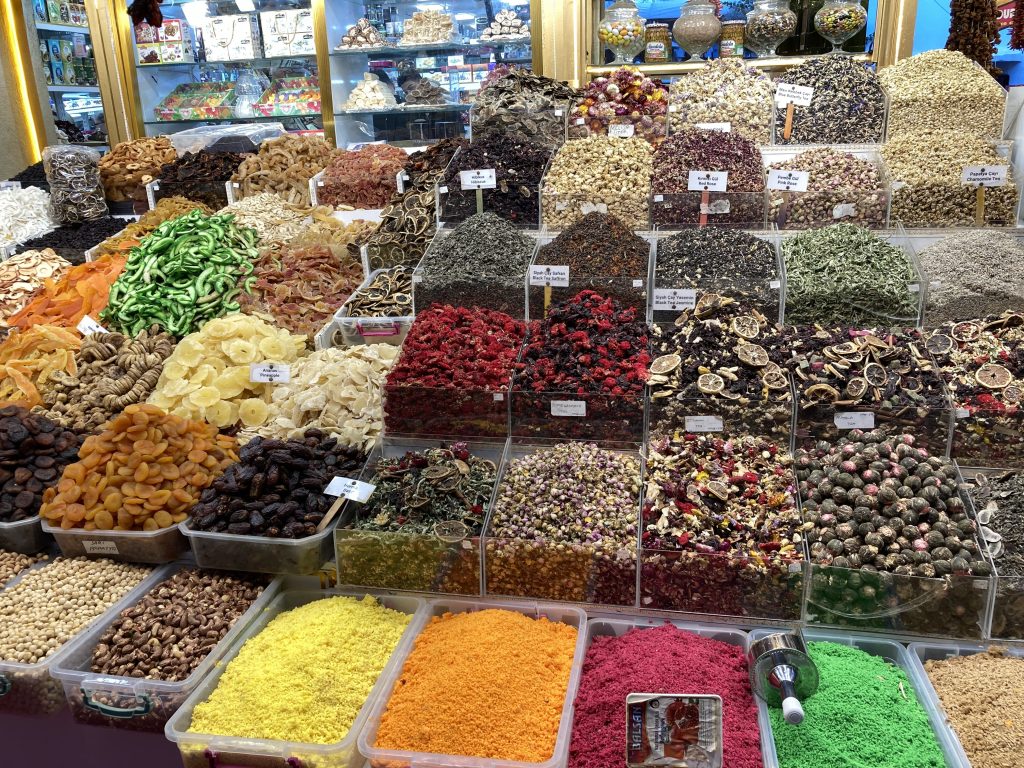
Saturday, October 11
“We have just walked off the boat for the last time and are waiting on the bus, waiting to go . . . to Antalya.” On our way, we made two stops, Patara and Andriaki, ancient harbor cities where Paul’s boat would have stopped.
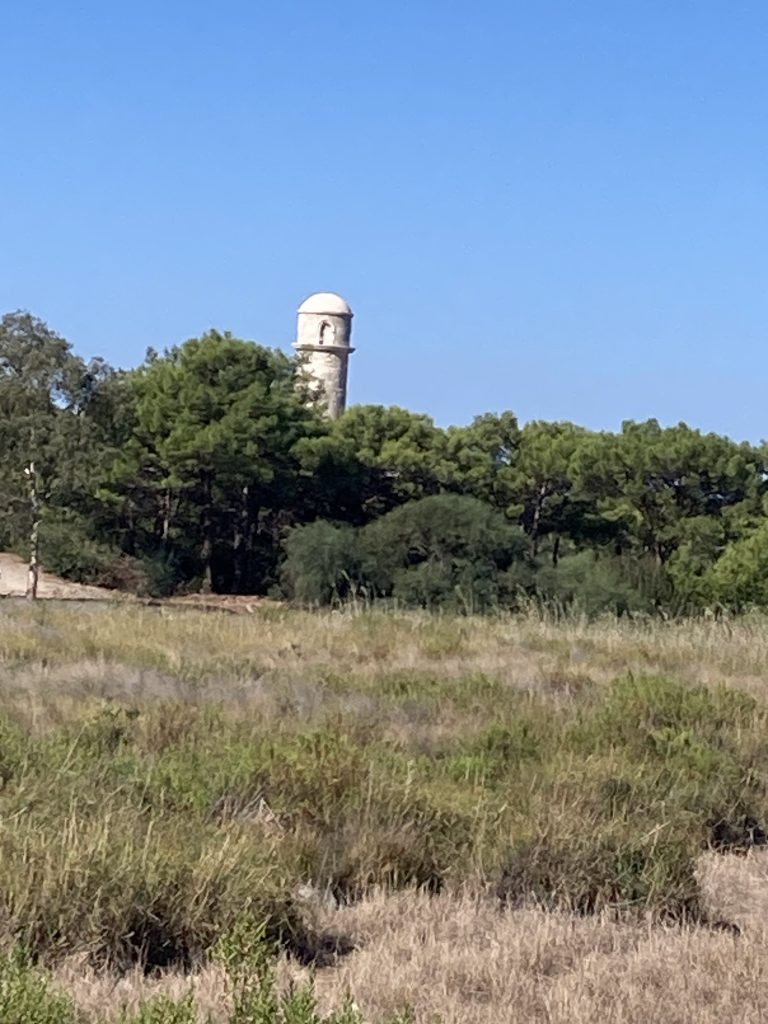
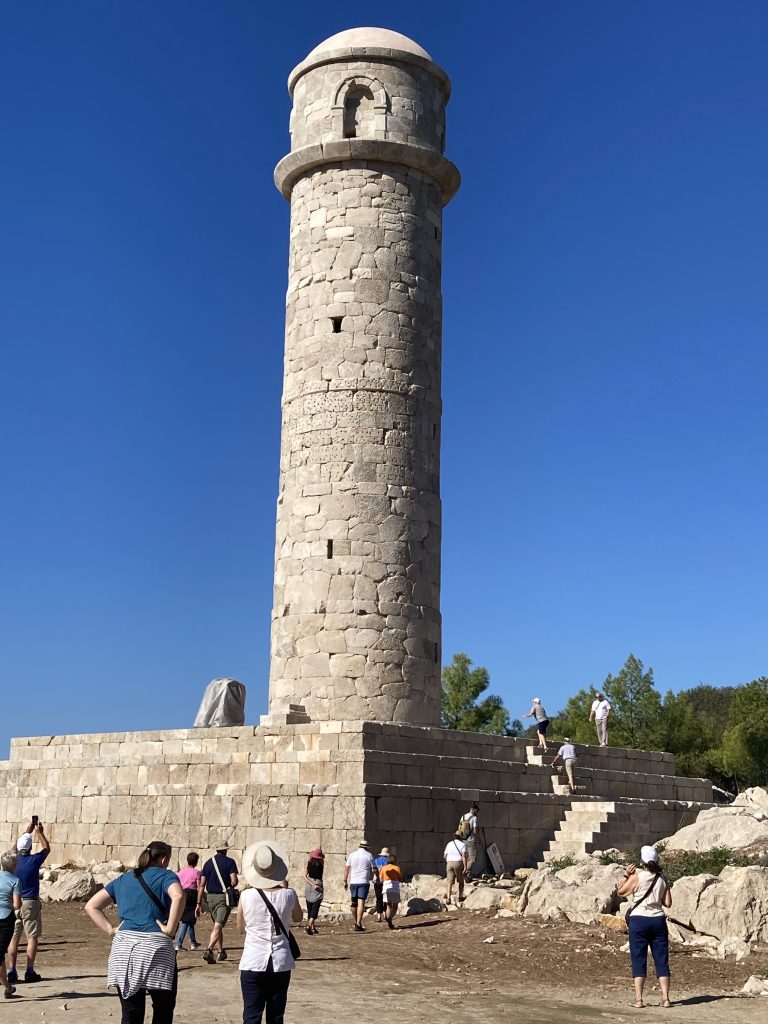
We walked to an ancient lighthouse on the coast that Linford and Janet have watched being restored for many years. The guessed what the ruins were before any rebuilding began.
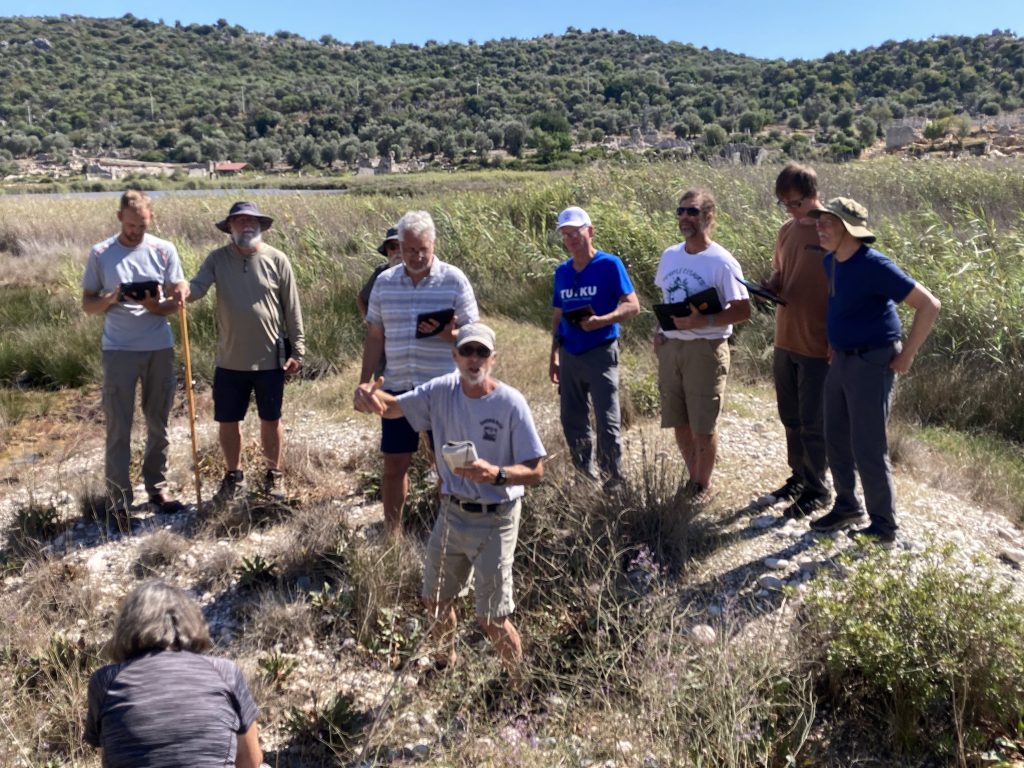
Sunday, October 12
Instead of church bells, we were wakened by the muezzin’s call to prayer this morning, coming from one of the three minarets visible from our small balcony. Only a few of us could attend the morning service at a small church where Cantore sang, Wayne and I wandered the old, protected harbor of Antalya.
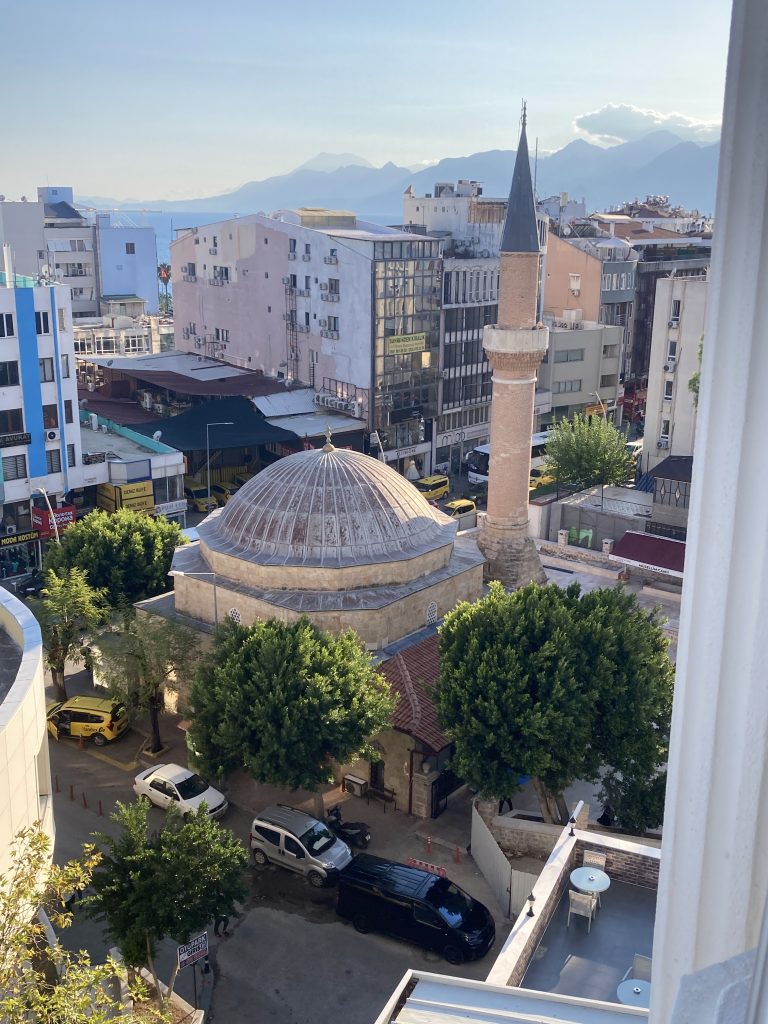
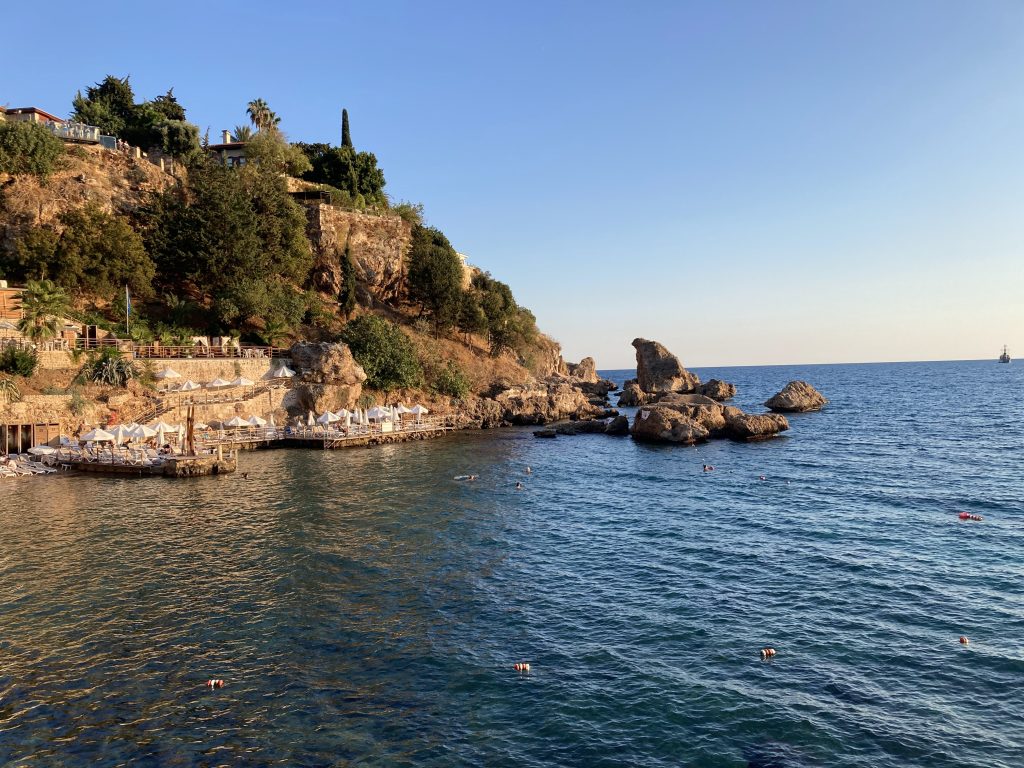
In the afternoon we took buses to Perge, to see the ruins of the old city, once a showpiece of its era and a place Paul’s boat would have stopped. It is now some distance from the water because the original harbor had silted in, something true of a number of harbor towns we visited.
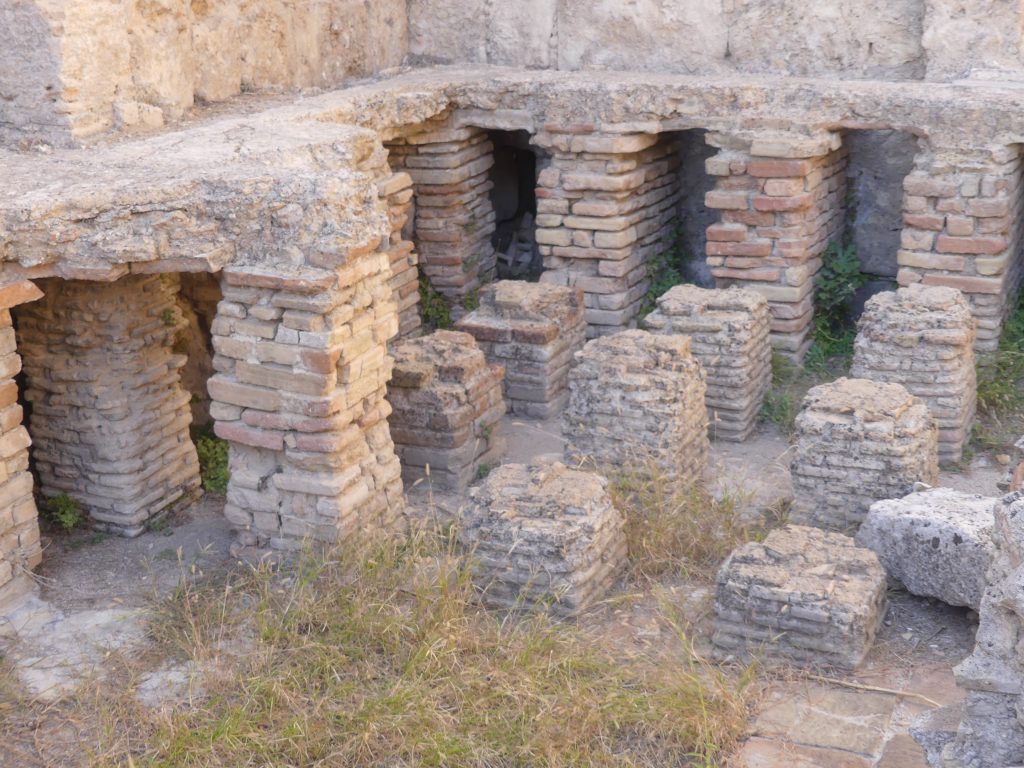

At 6:00 p.m. we all attended a program given by Cantore at St. Paul’s Union Church in Antalya and then walked back to our hotel for our final meal together and saying farewells.
Monday, October 13
We began our long trip home, arriving at Dulles at 8:30 in the evening, but more like 3:30 a.m. the following morning, calculating from when we got up.
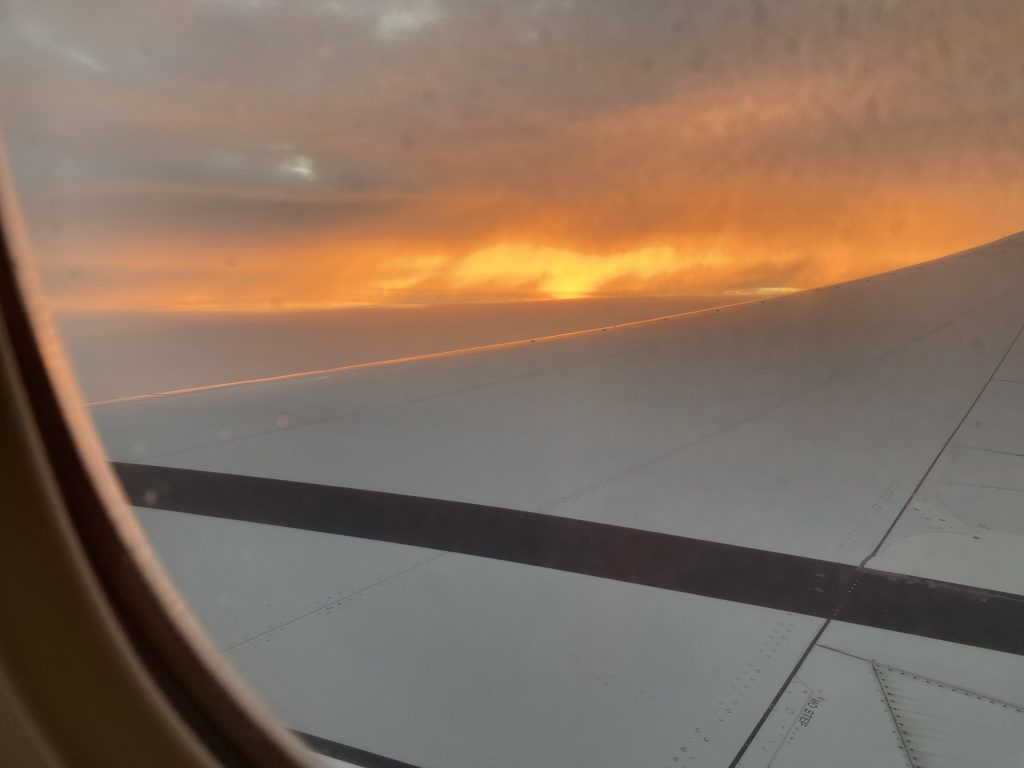
Our travel is ended, but the learning is ongoing. Travel to new places expands my world. Turkey is no longer just a place on a map, nor are the Greek islands just dots in the sea. I know more about them from having walked on their soil and rocks and city streets, from listening to guides, from touching, tasting, and hearing. I have sailed “on the face of the deep” and can still feel its rocking pulse. But more important, I now have a framework within which to continue to add information, understandings, and insights. When Turkey is in the news, I will listen more intently. Faces and places will come to mind. When I read the book of Acts, I will understand better the terrain Paul traveled, the isolation John experienced on Patmos, the reach and impact of the Roman empire, and Greek contributions to the Western world. How this will expand and deepen my life, I have yet to learn, but I am confident that it will.
Addenda
Gulets: Rather than trying to describe our gulet, I’m attaching a short video featuring the Admiral, the gulet we traveled on. Admiral Luxury Yacht.mp4 – Google Drive Our room had two single beds with the width of another single bed between them–cozy but adequate.
Food: For me, an important part of any overseas travel is the food and this trip was no exception.
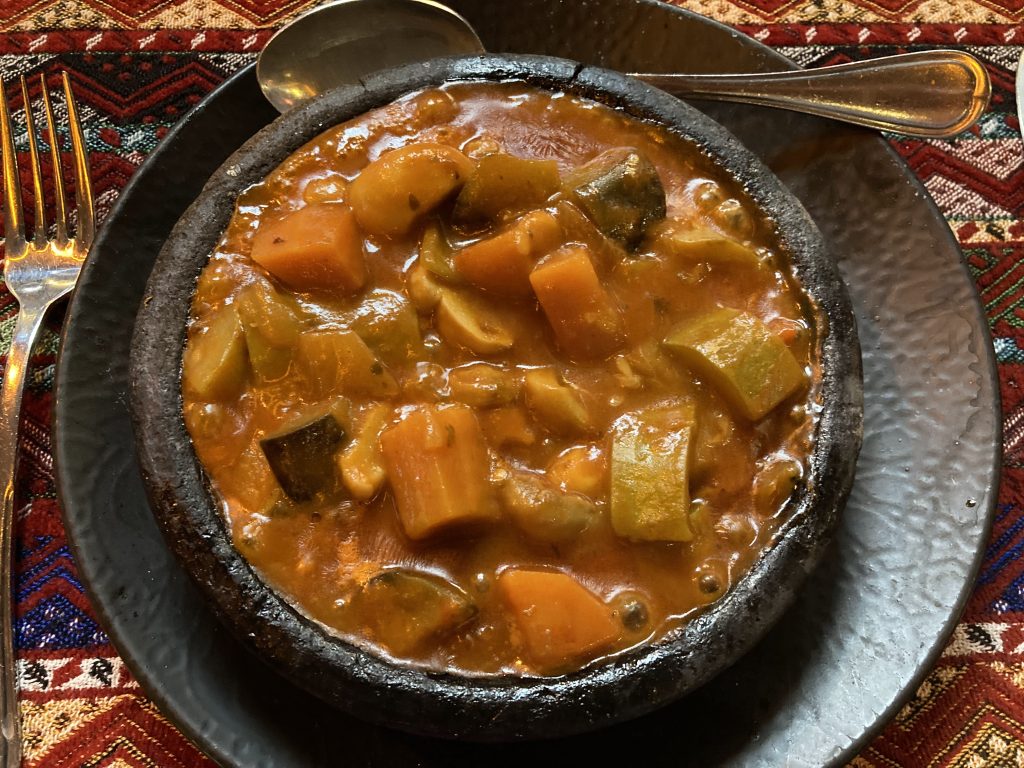
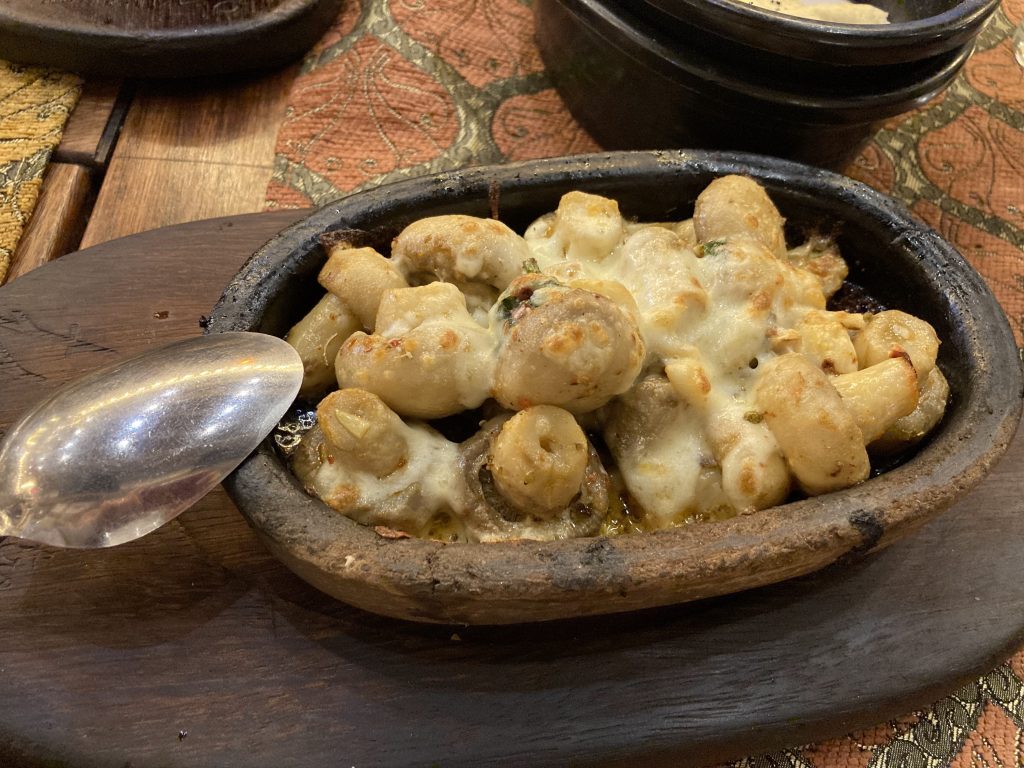
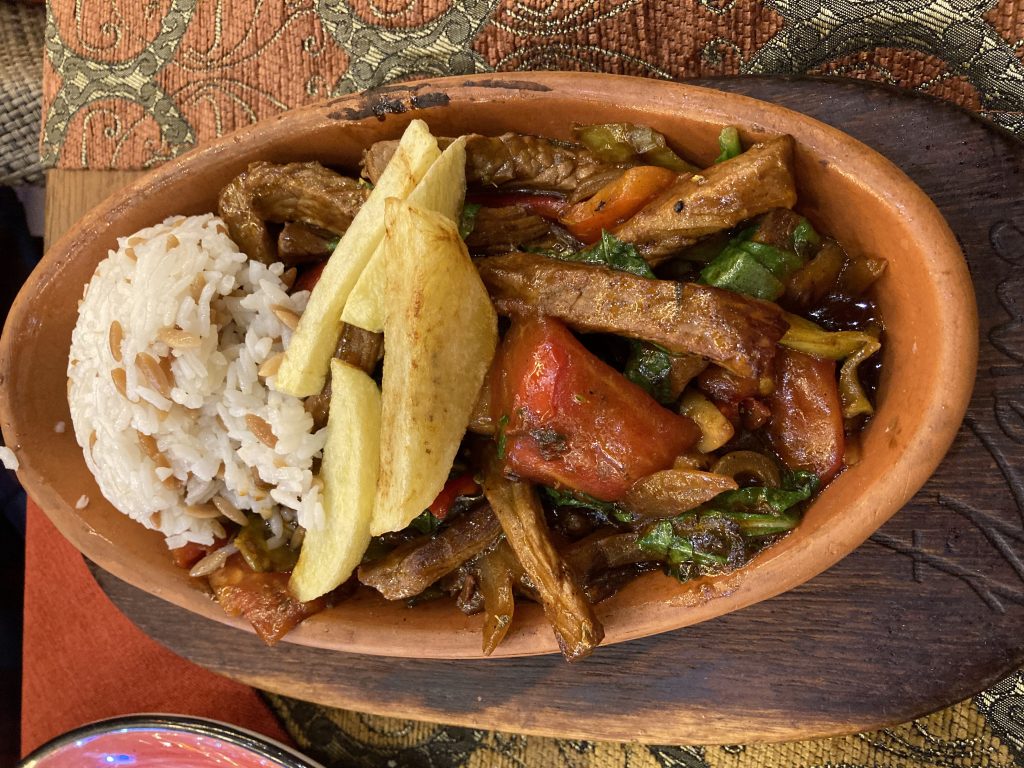


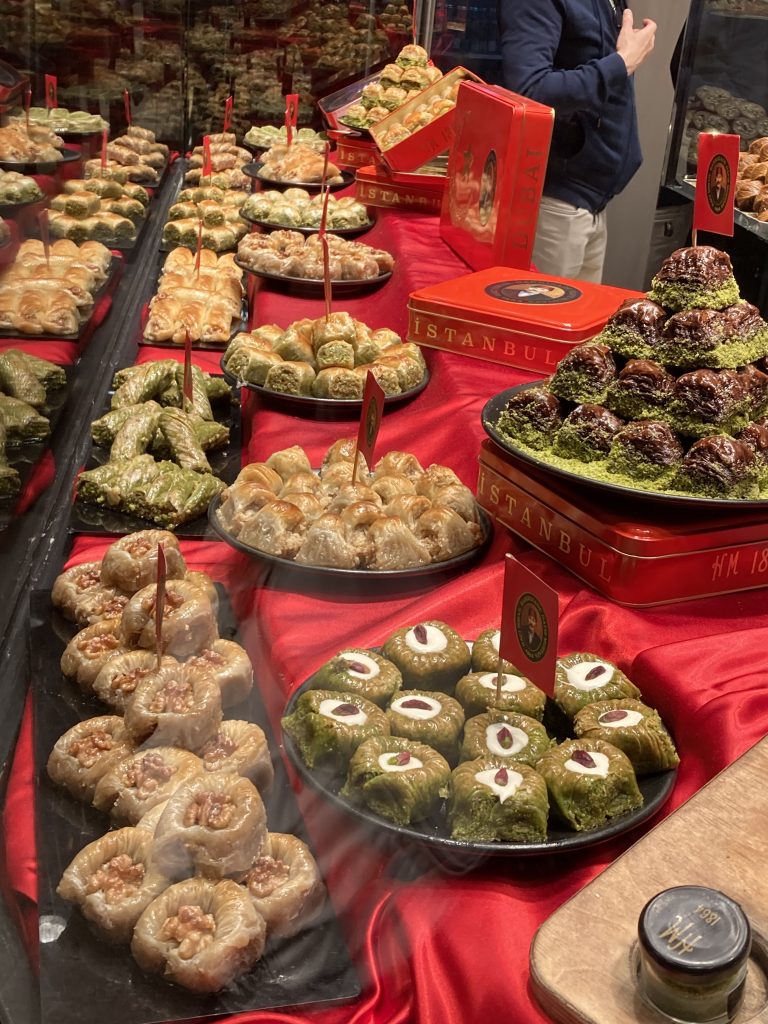
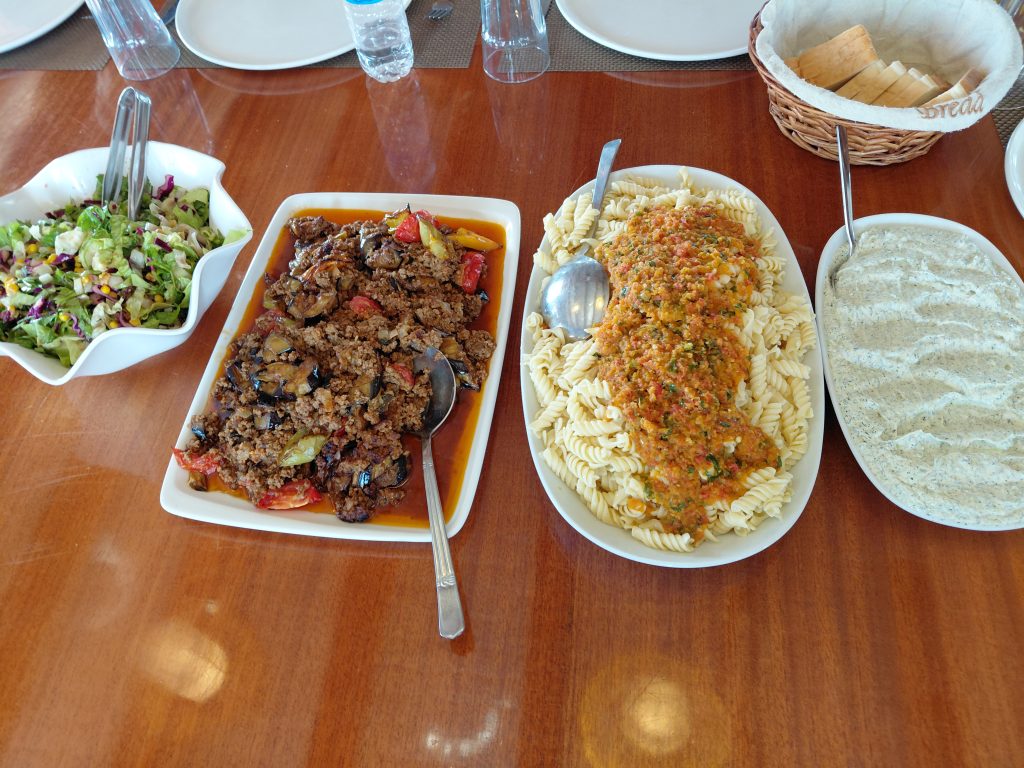
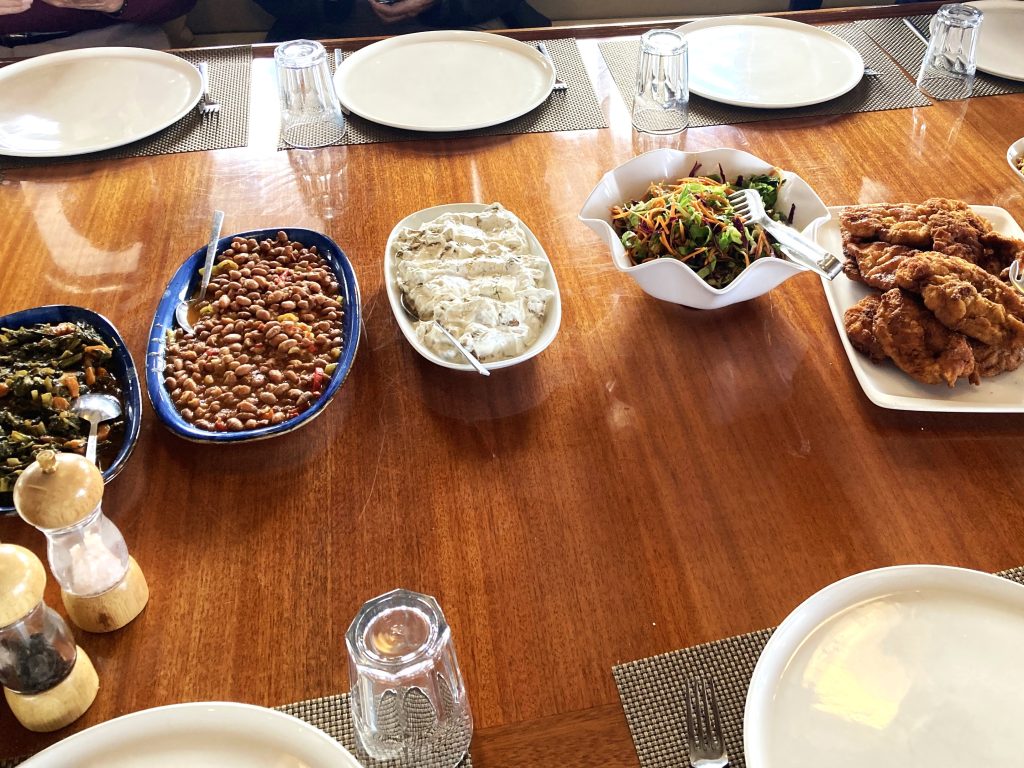
Cantore: If you want another perspective of our trip, here is Phil Kniss’ well-written travelogue along with pictures and several videos of Cantore singing. He included many more gulet pictures than I did. It’s worth a look and listen. Mediterranean Tour – CANTORE MEN’S ACAPPELLA
Cats: The thing I didn’t anticipate were the cats. They brought to mind lines I hadn’t thought of in decades, “cats here, cats there, cats and kittens everywhere,” from Wanda Gag’s Millions of Cats. We saw cats on the streets, in shops, in parks, at feeding places, and in sleeping boxes, maybe not “millions and billions and trillions of cats,” but more than I’ve seen anywhere and clearly well cared for. One guide told us that cats help keep down the snake population because they can attack more quickly than a snake can strike—interesting bit of trivia for cat-lovers.

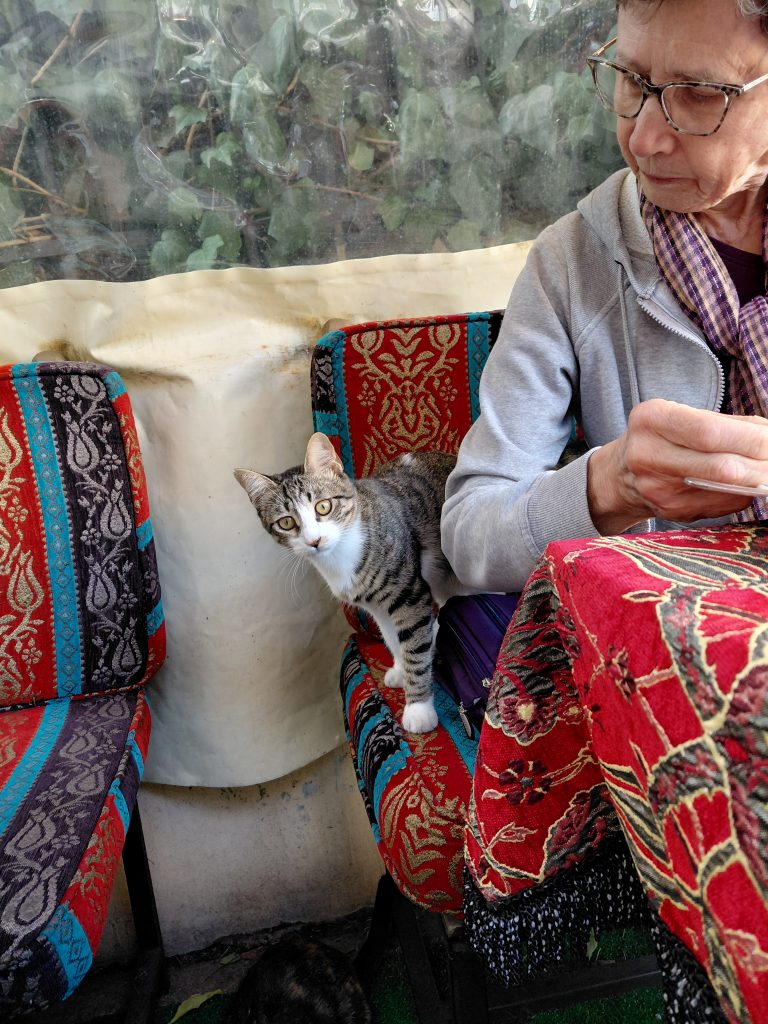
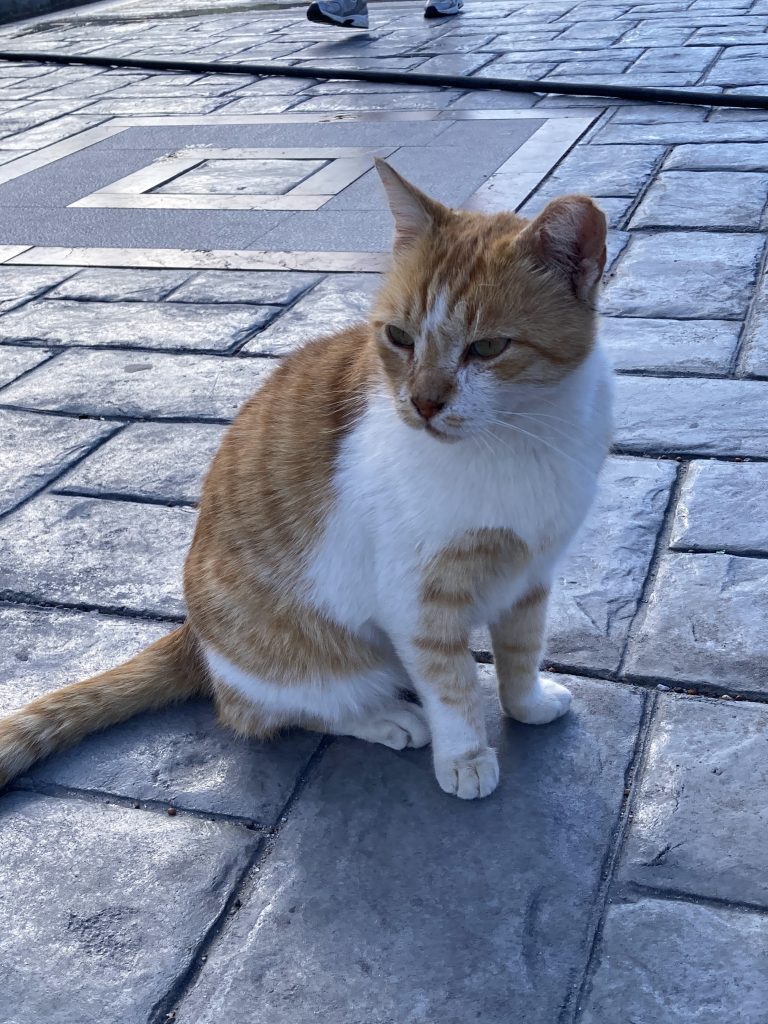
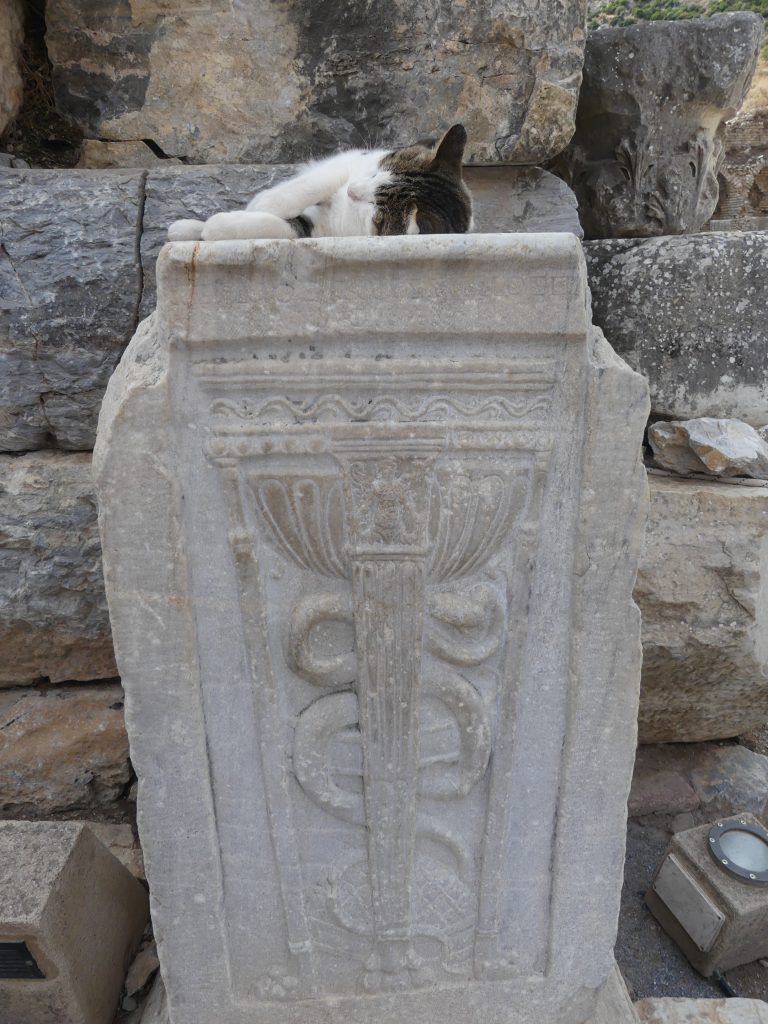
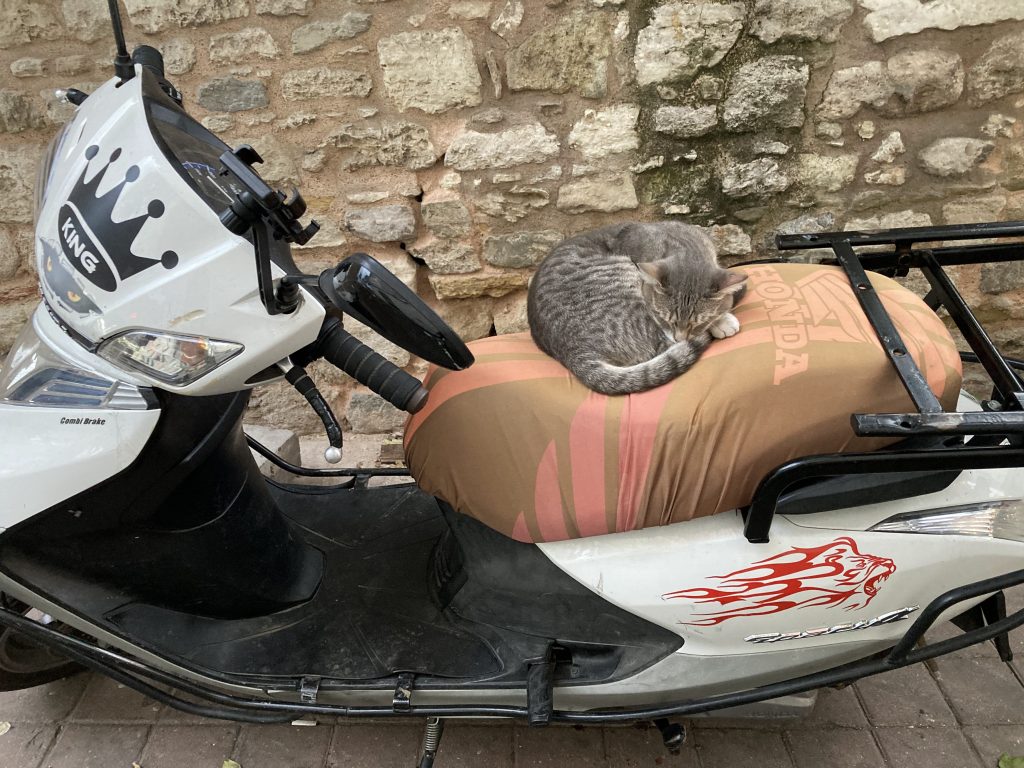

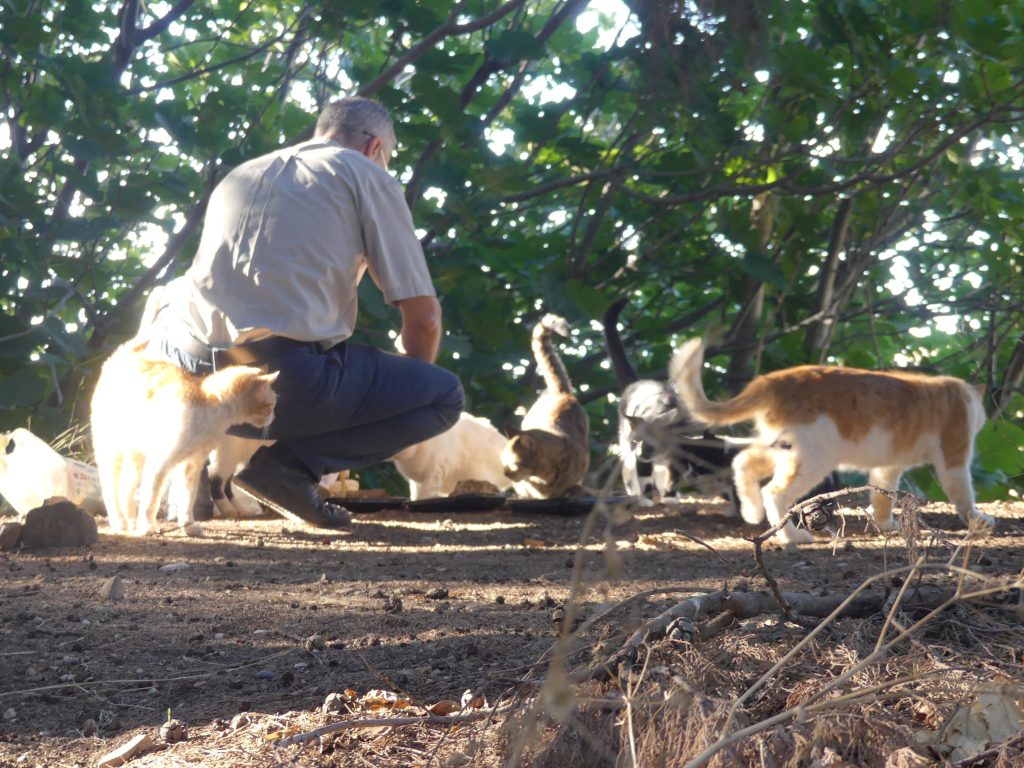
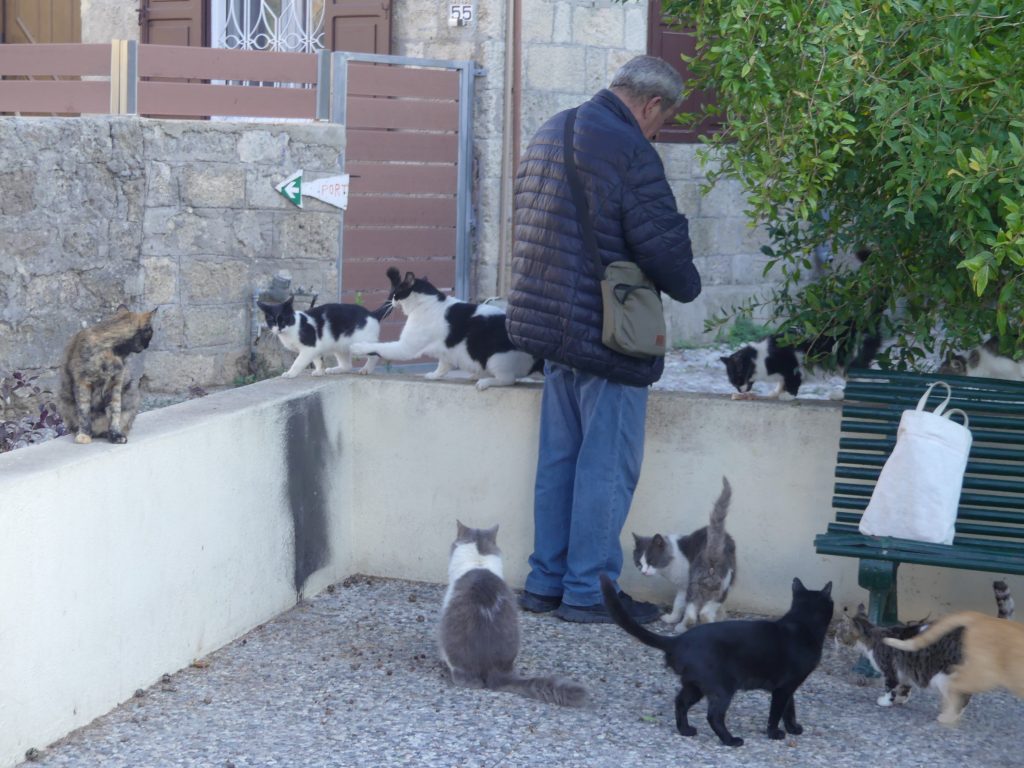
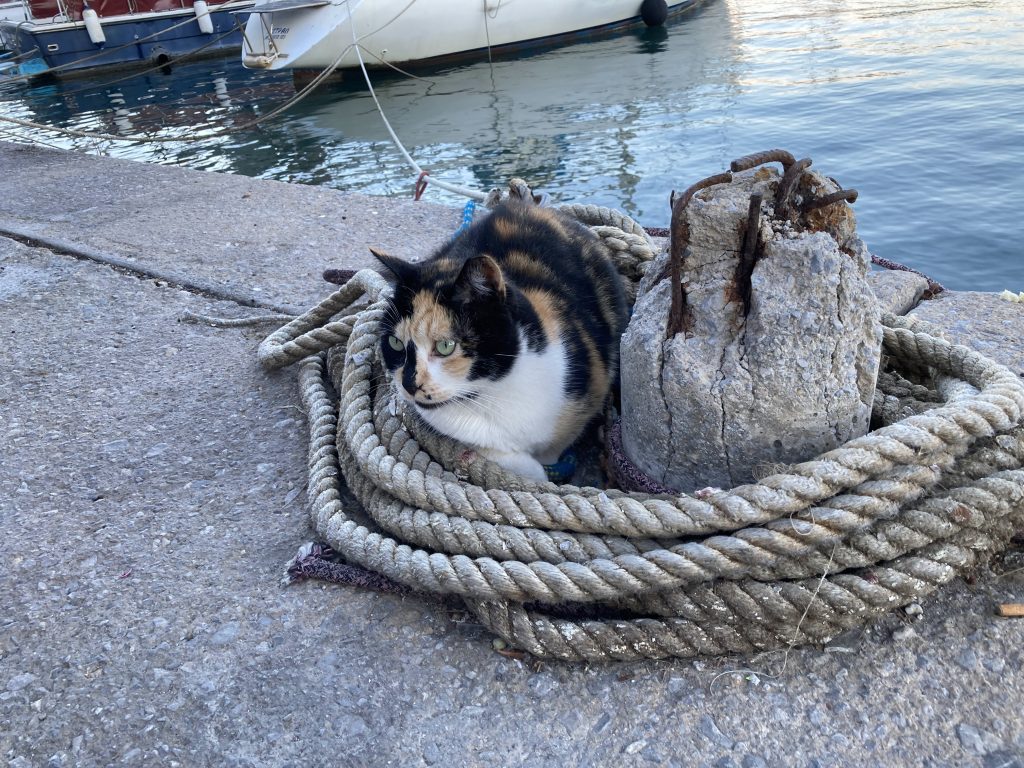
Photo credits: I took most pictures but used a generous sprinkling of Wayne’s as well.
It was good to hear about your trip you saw so much impressive history. Thanks for the details. Indeed so many cats. I wonder who feeds them.
Thank you for taking us along on this phenomenal journey with your eloquant insights and amazing visuals.
Thanks, Donna. It was an exceptional journey and we’re glad we managed to get in on the last one Linford and Janet are doing. As to visuals, we have enough to bore you to sleep. We can show a few more when we see you.
It’s a relief to acknowledge (especially to myself) that it is the final era of my life and my only wish is to be tender with myself and those I love —-to embrace each moment with fullness, gratitude, kindness, and love, no regrets, no expectations, even giving up (in this very moment) somehow an obligation to put it into words. ♥️
You just did put it into words, my dear.
How did I not know that you were on this exciting tour?? Love your comments with the photos.
I’m not sure because I thought I would have mentioned it one time or another.